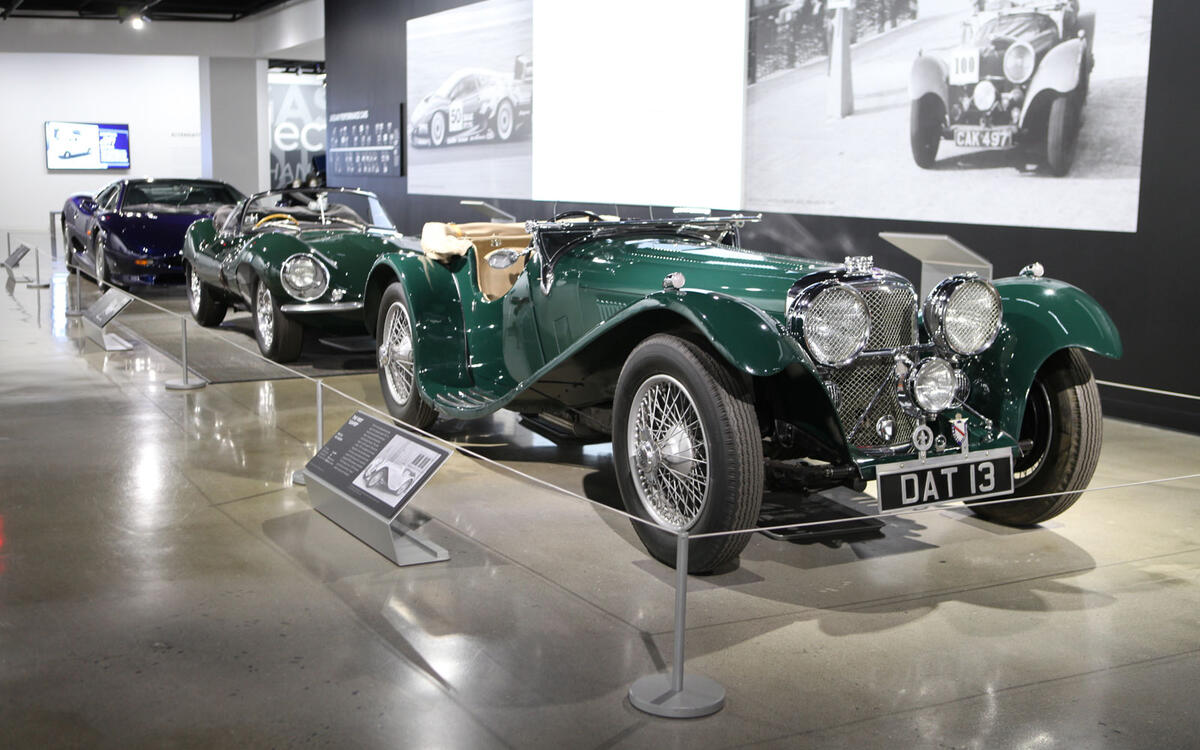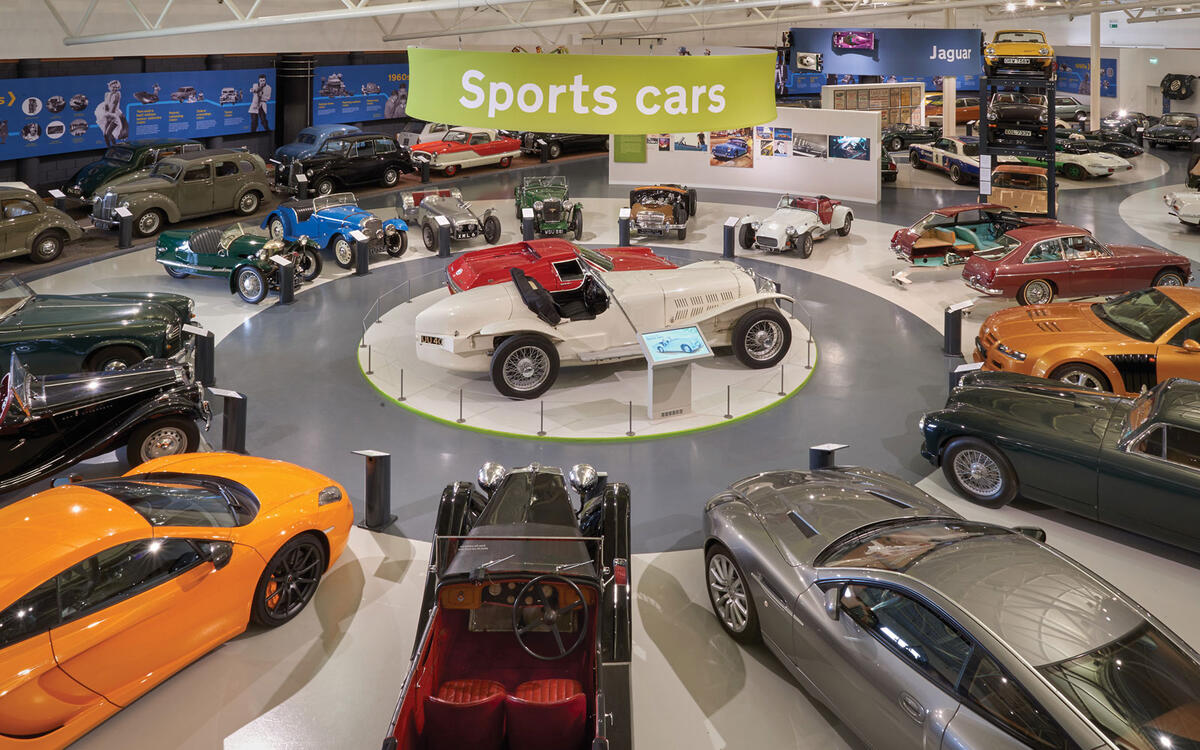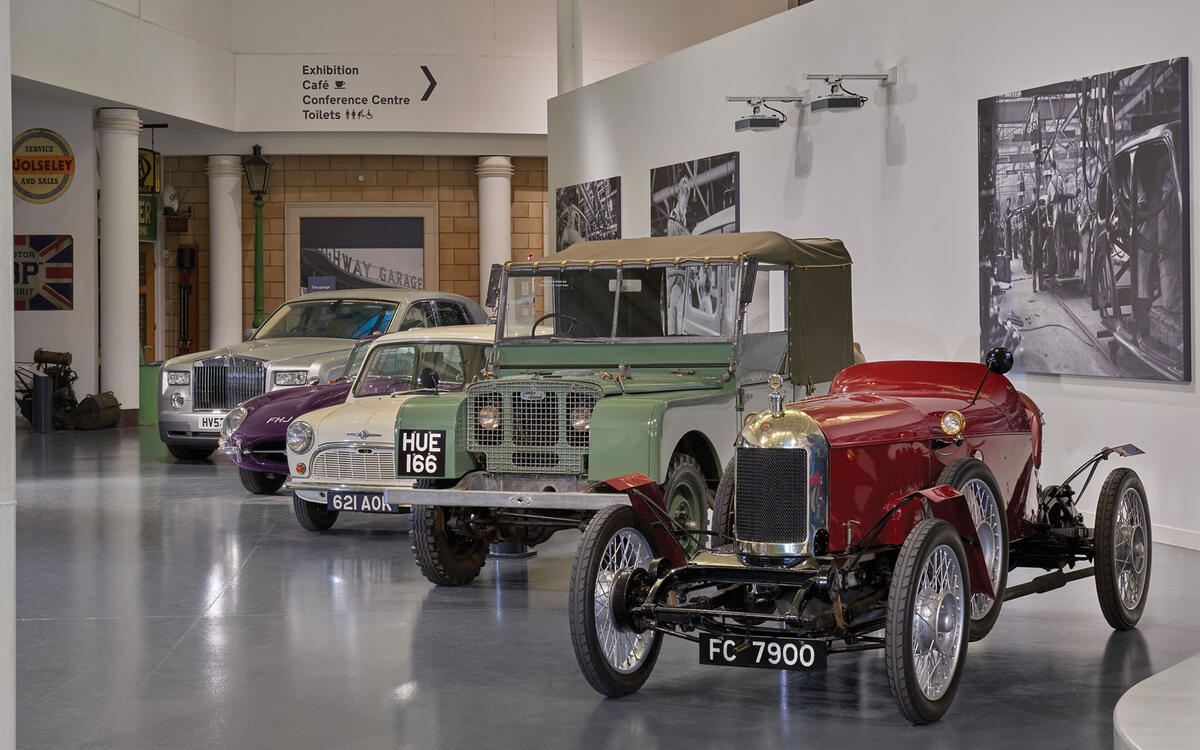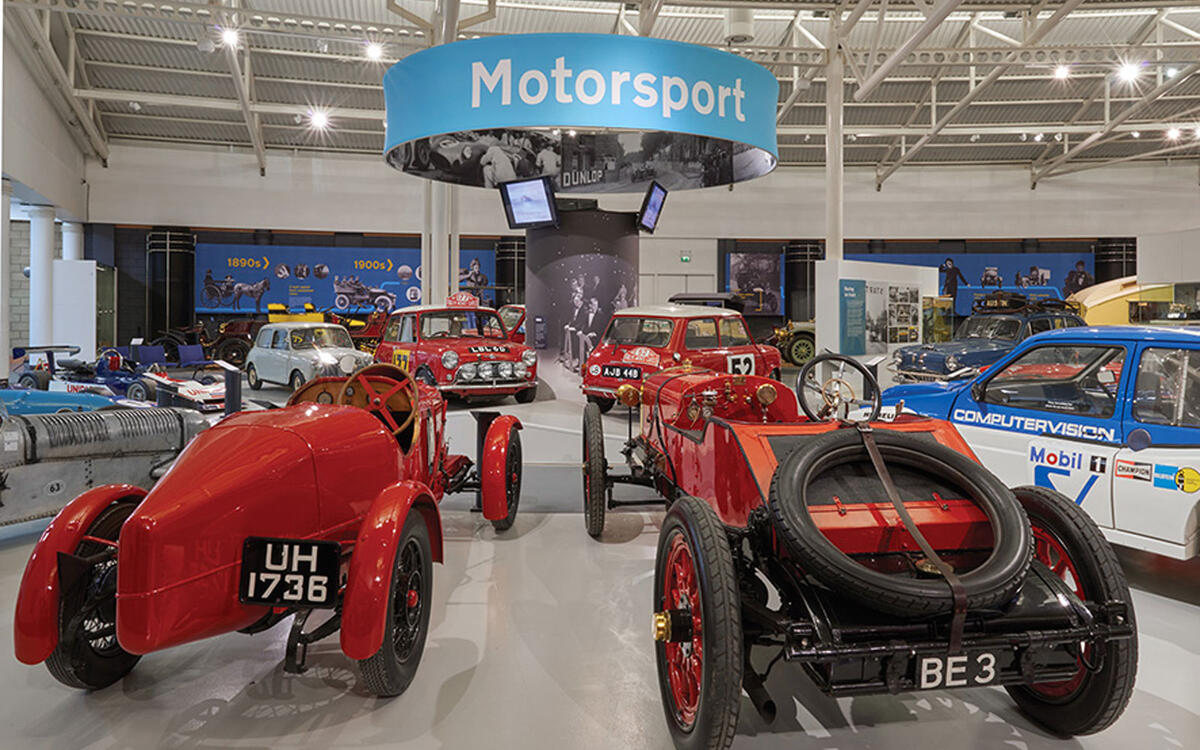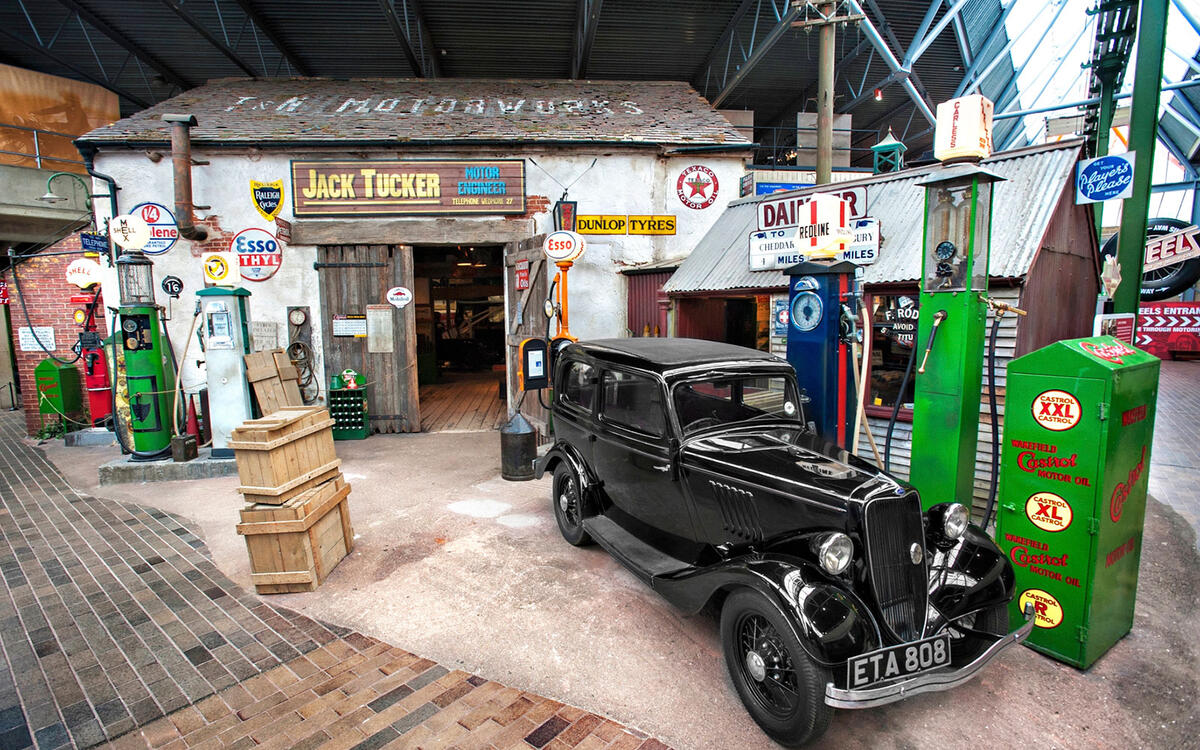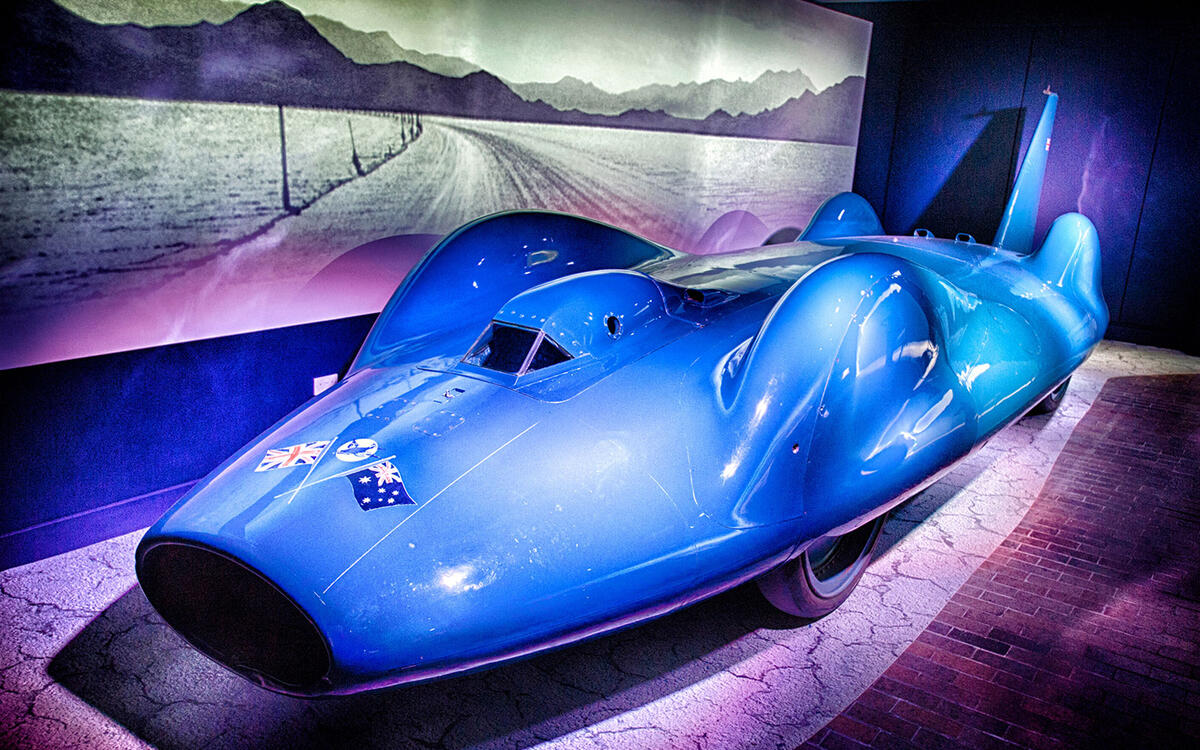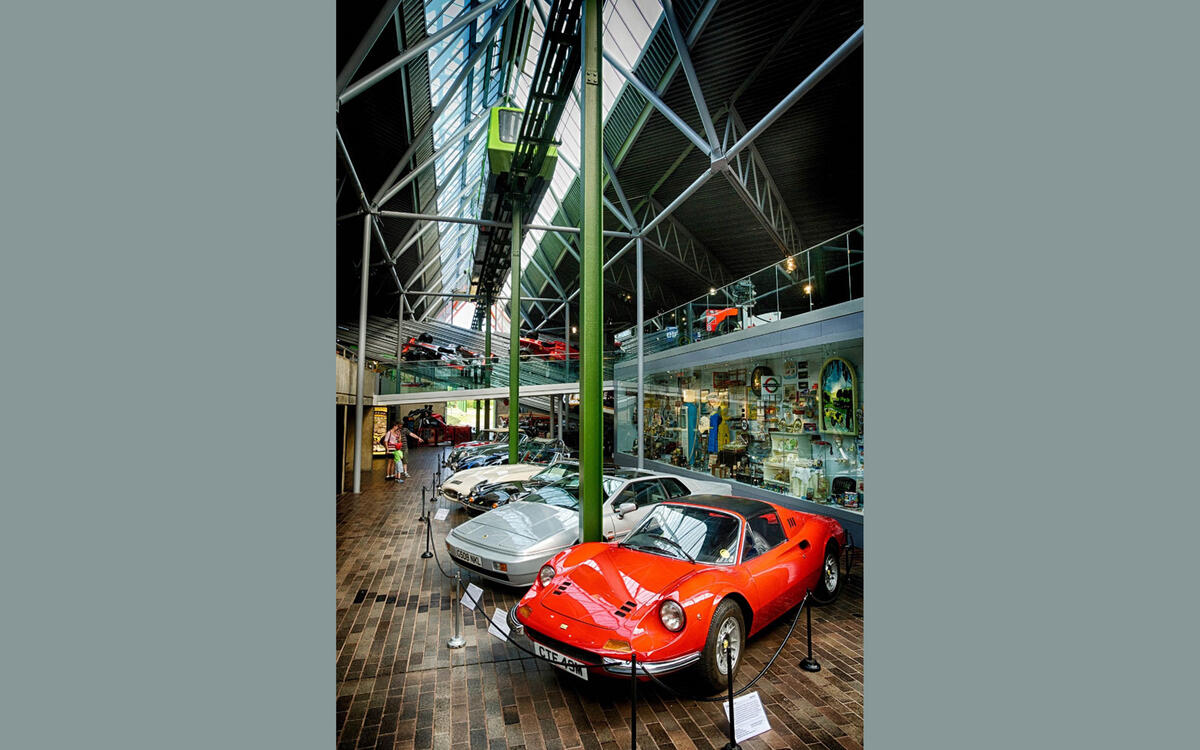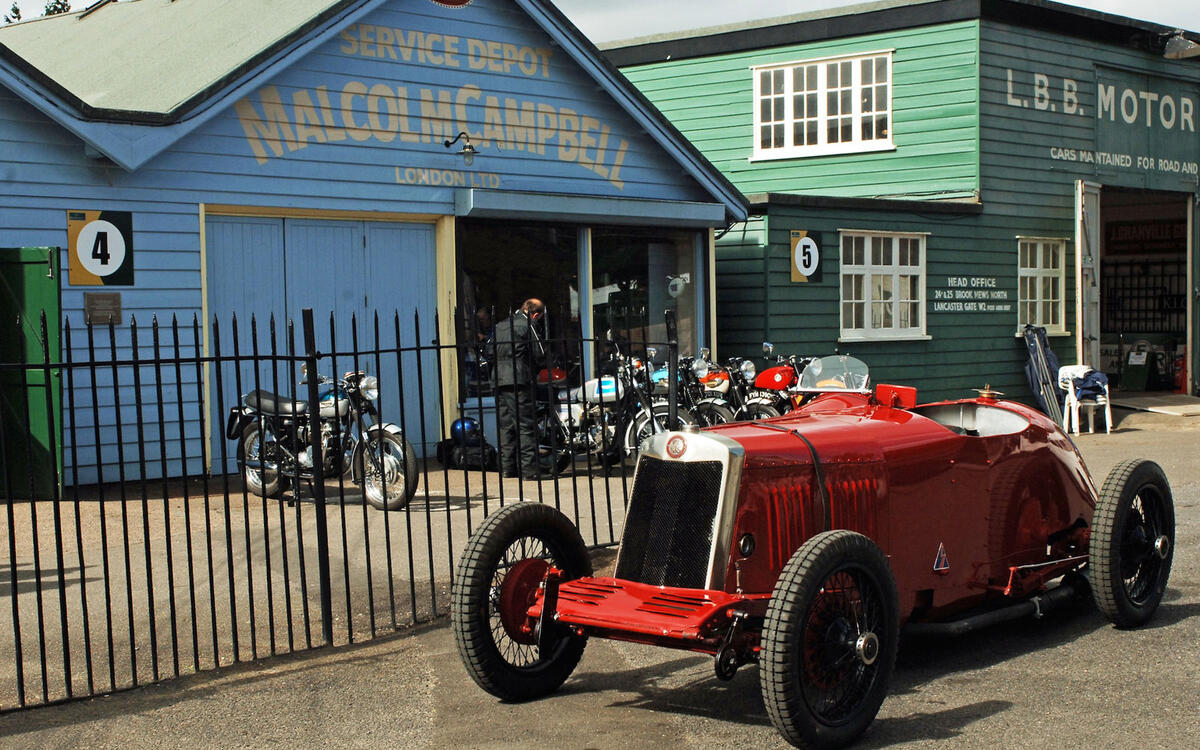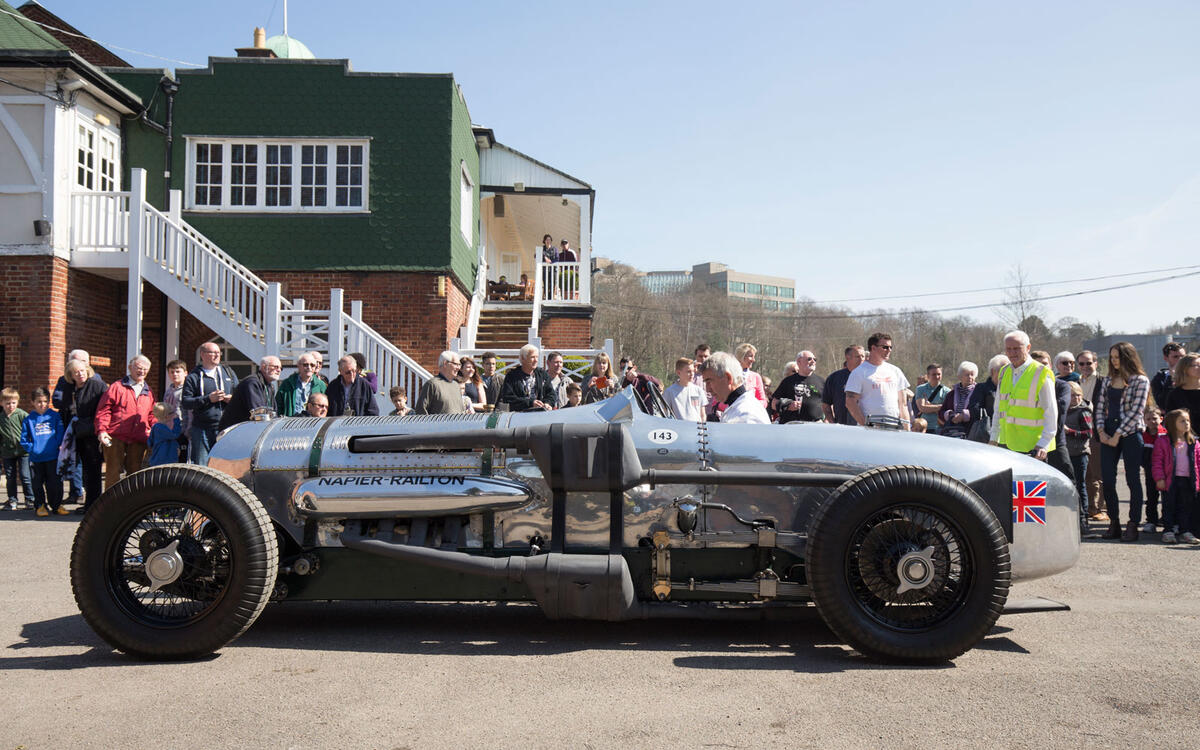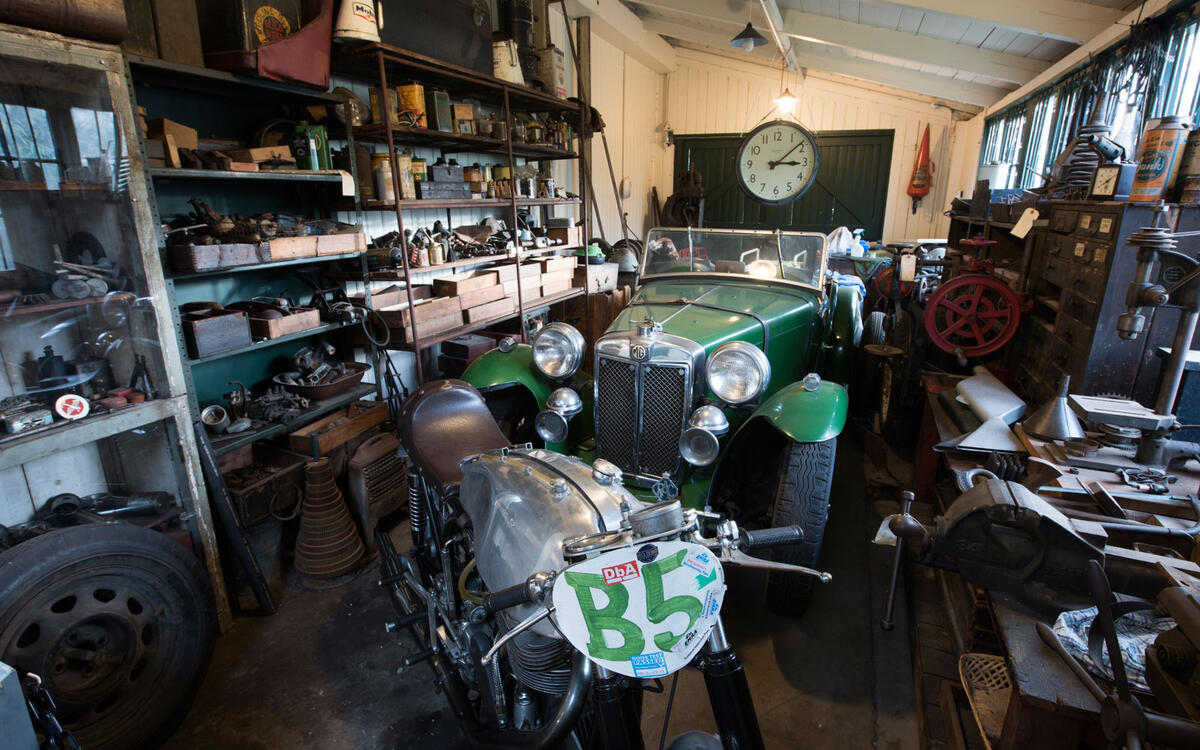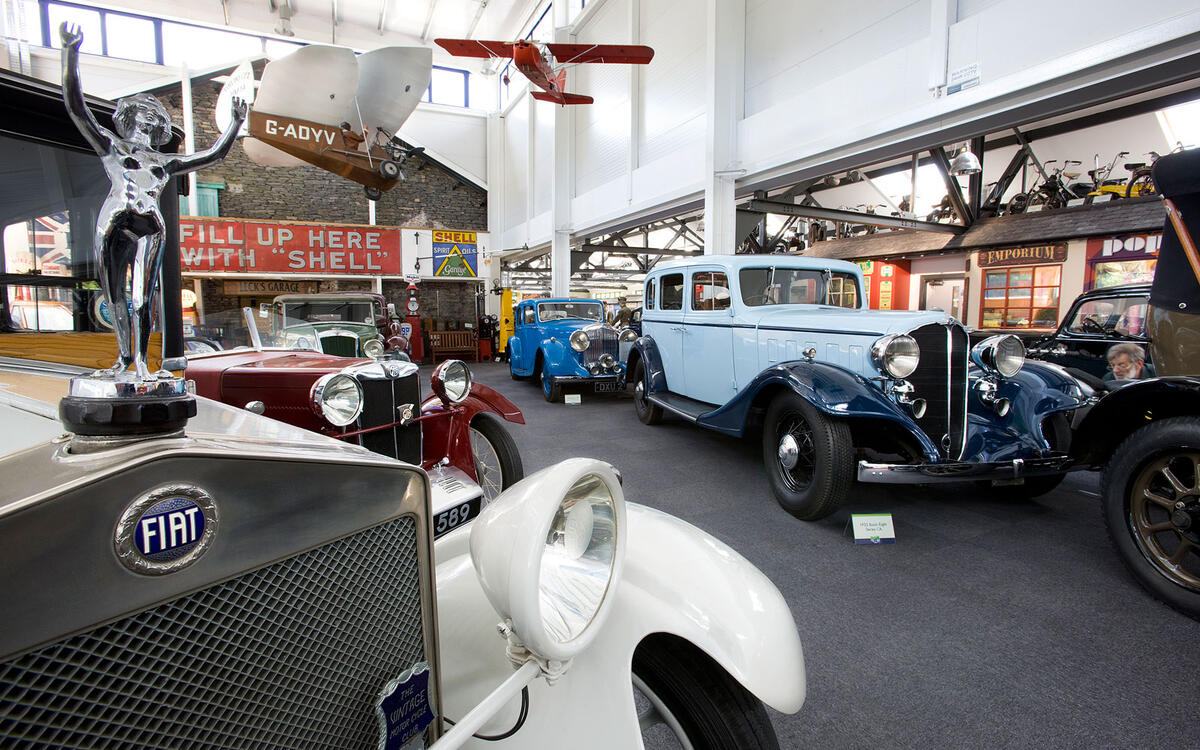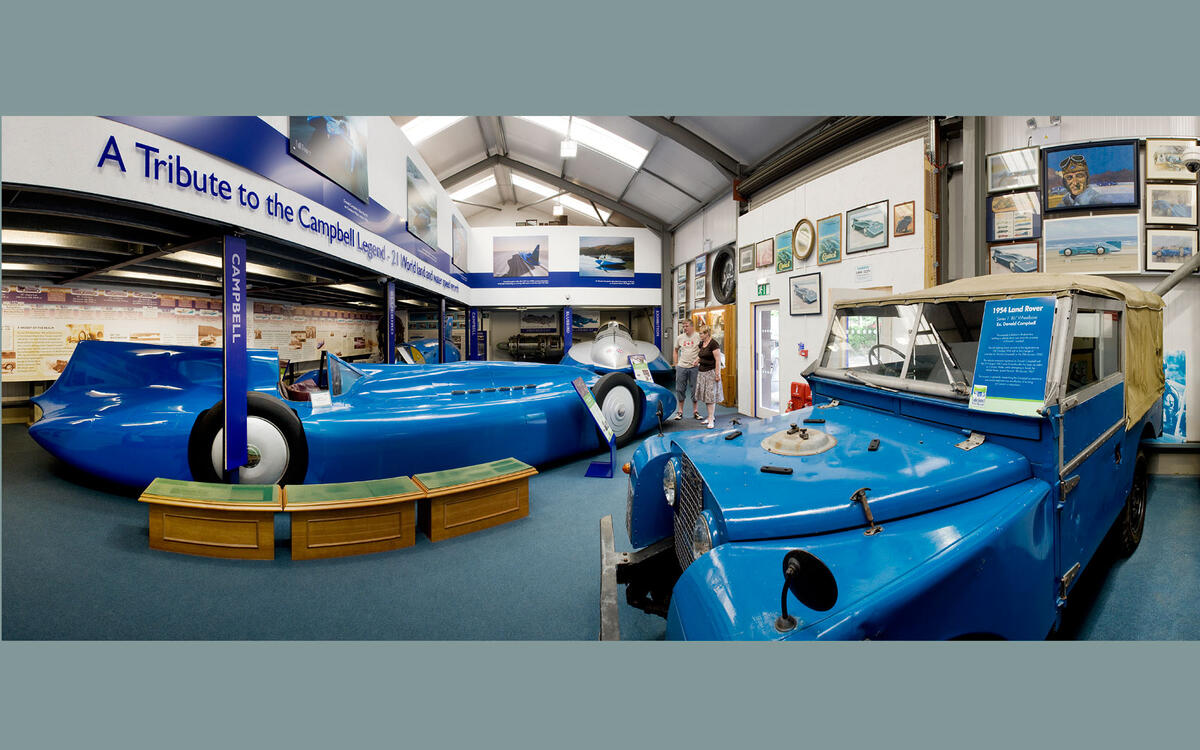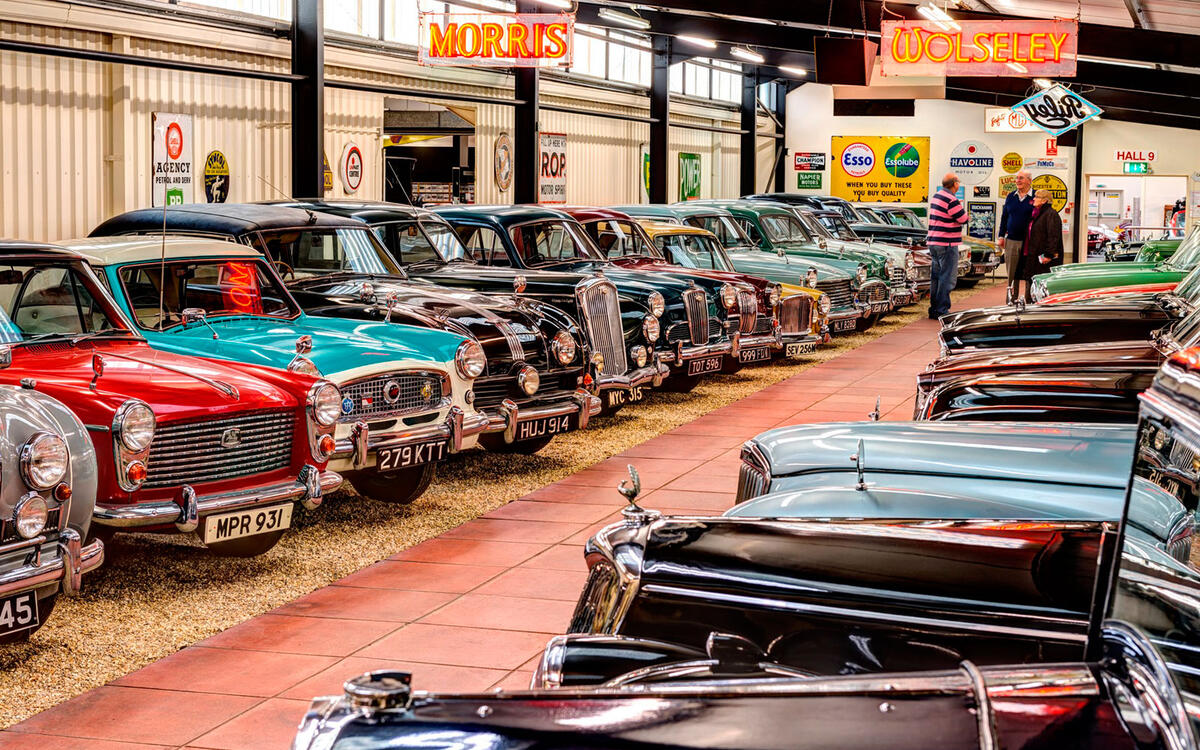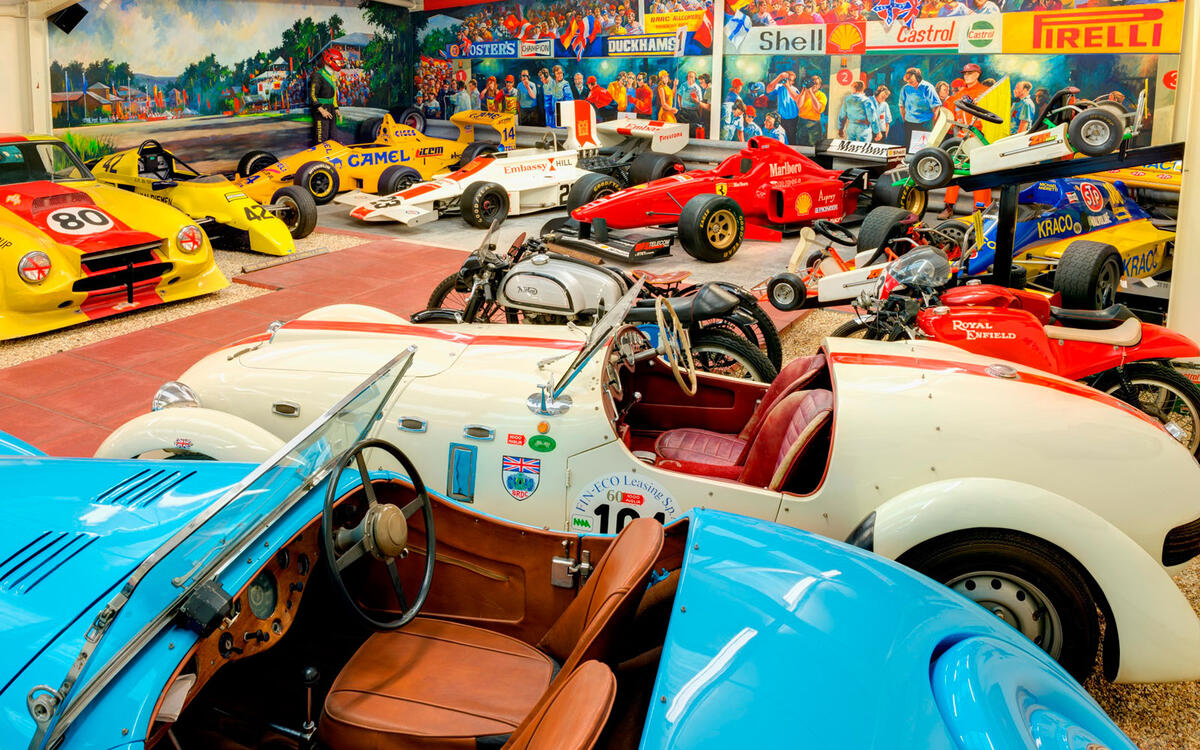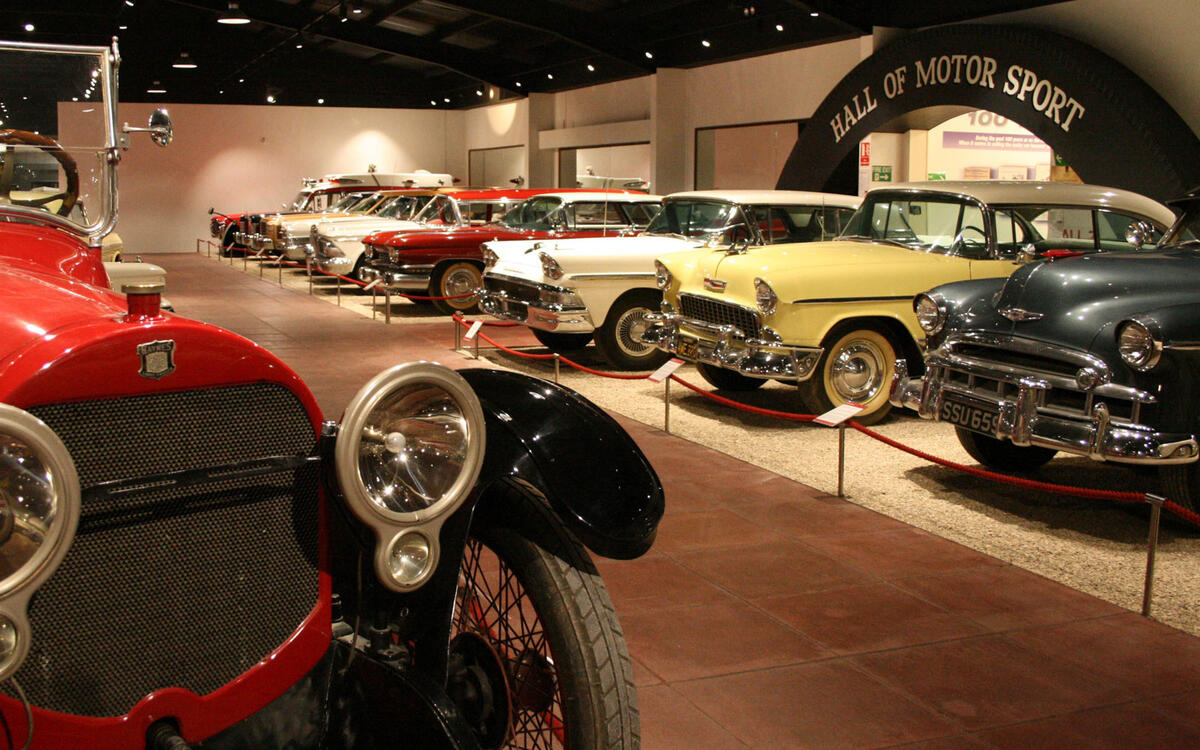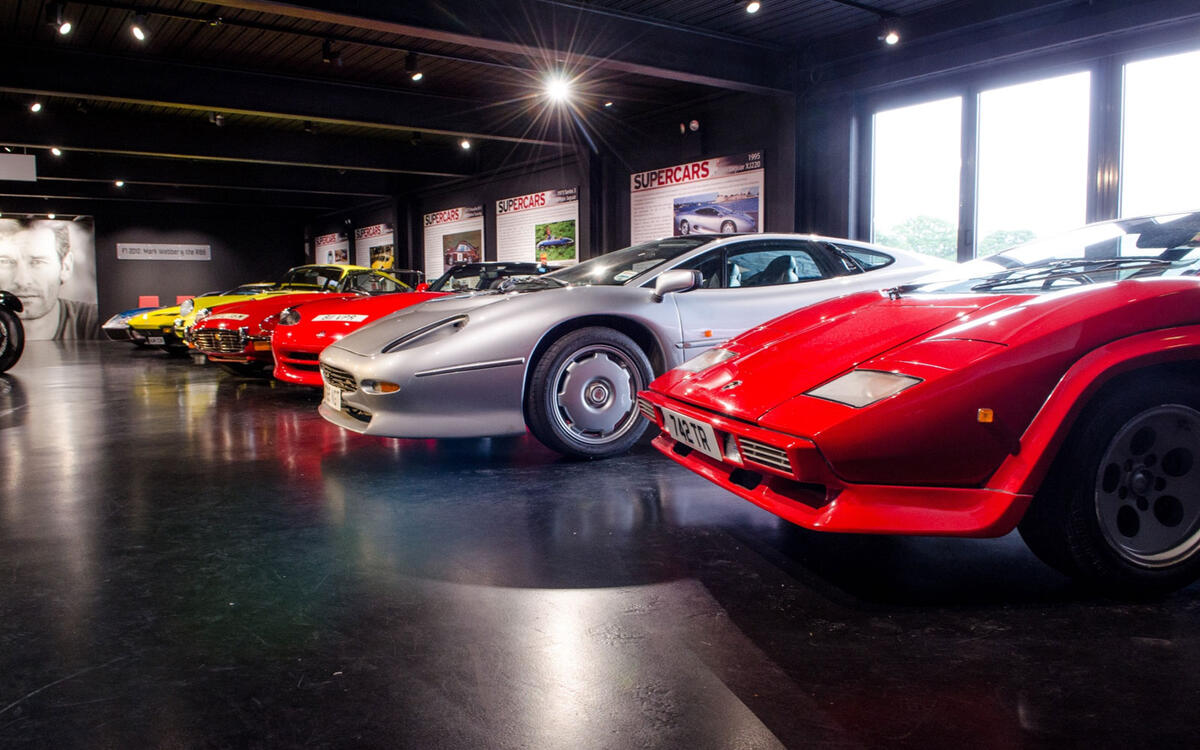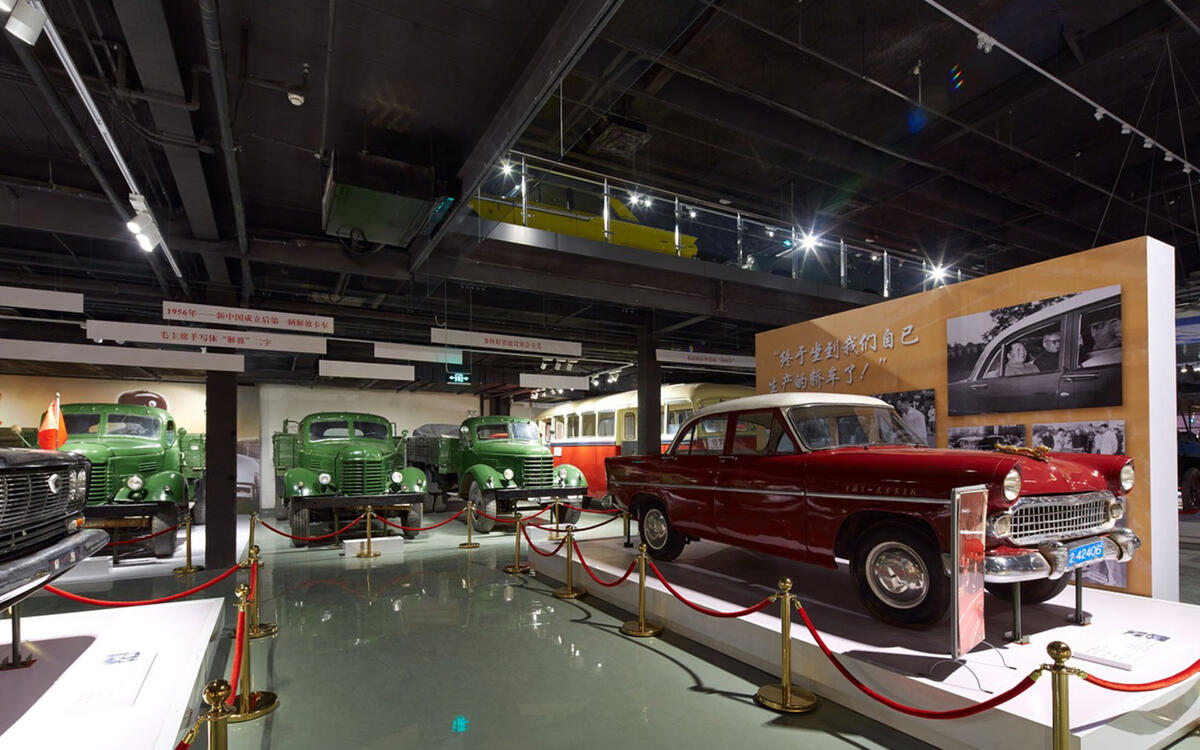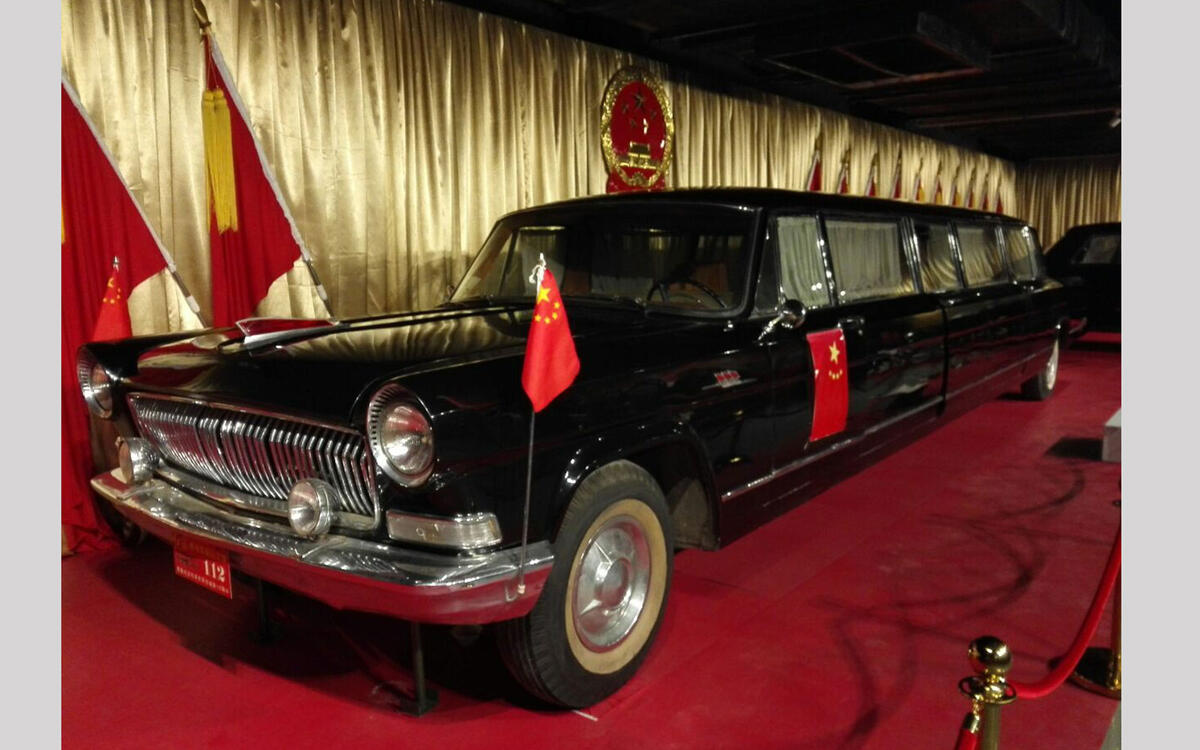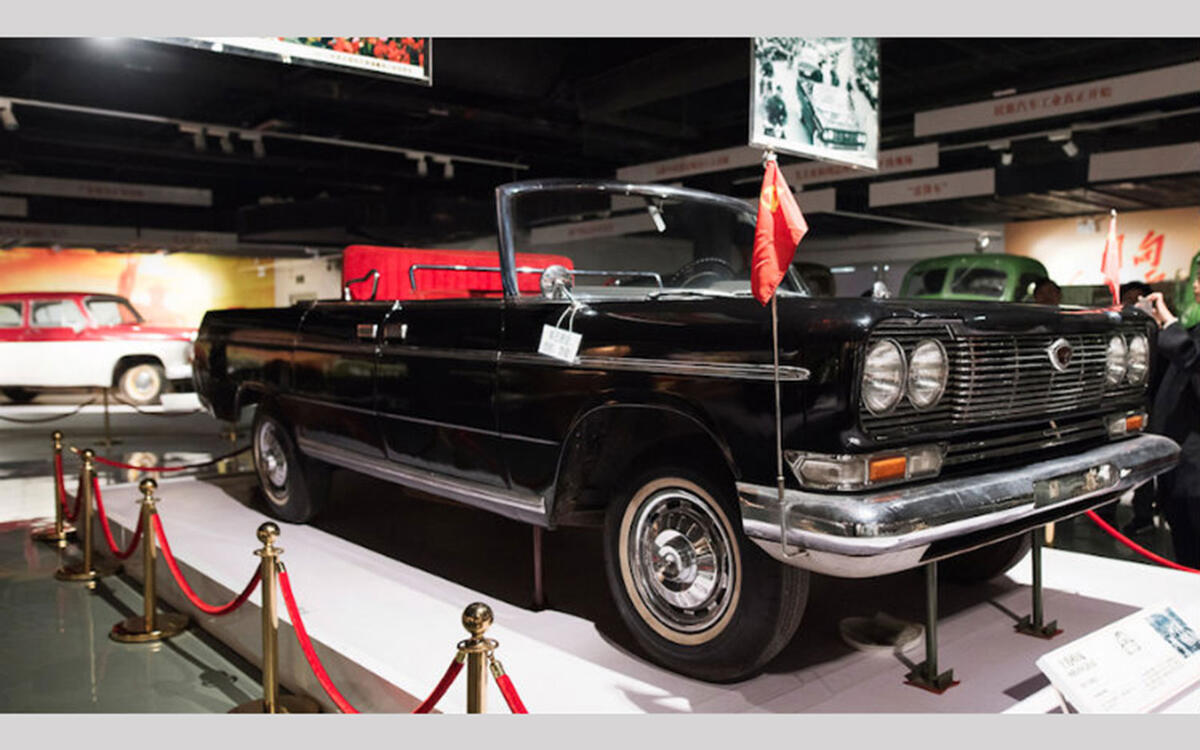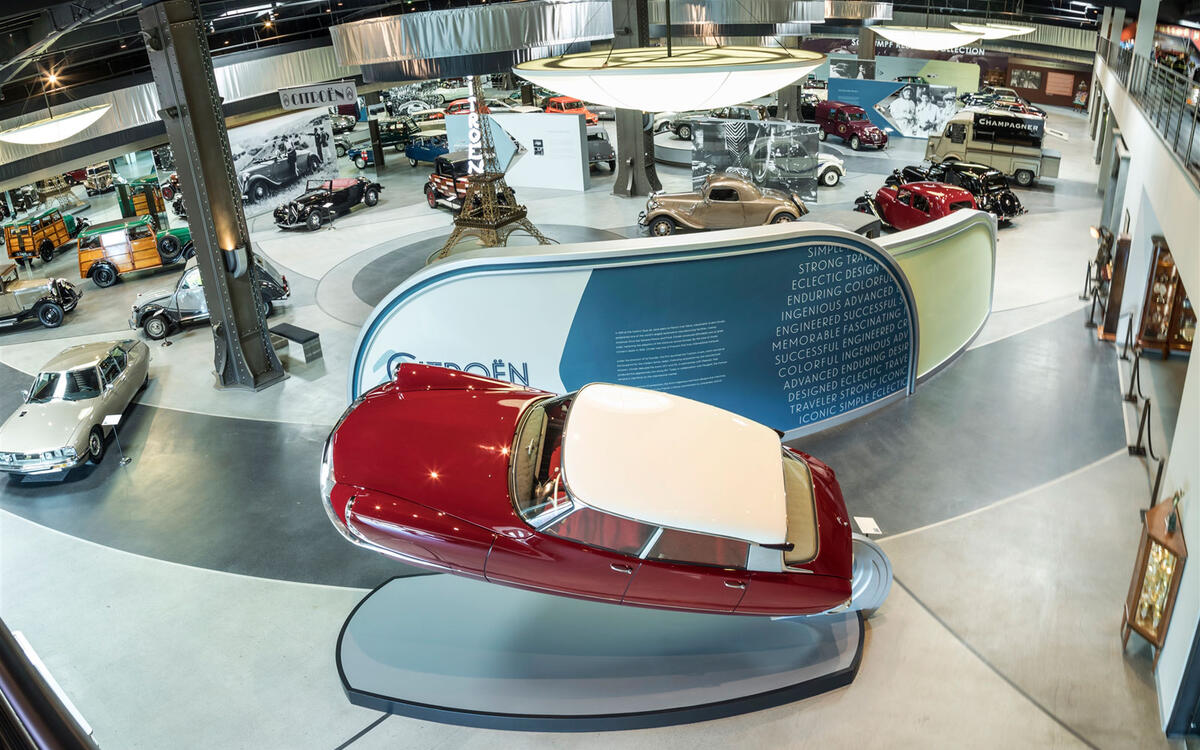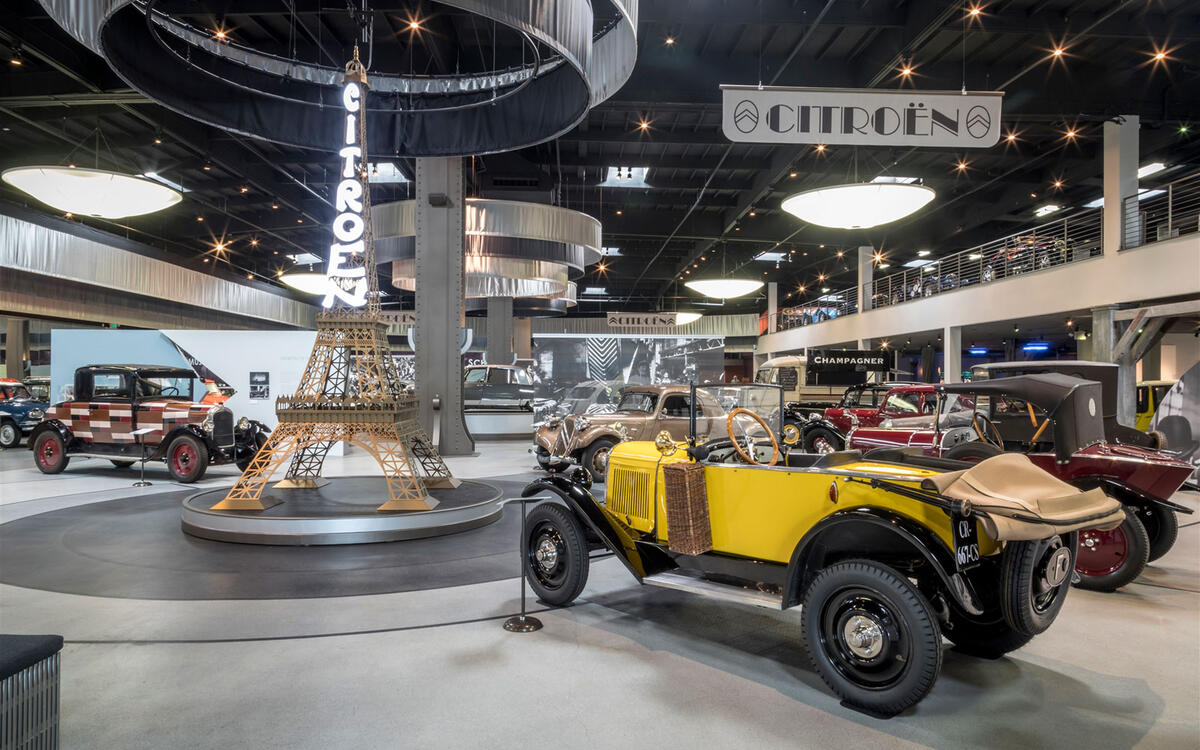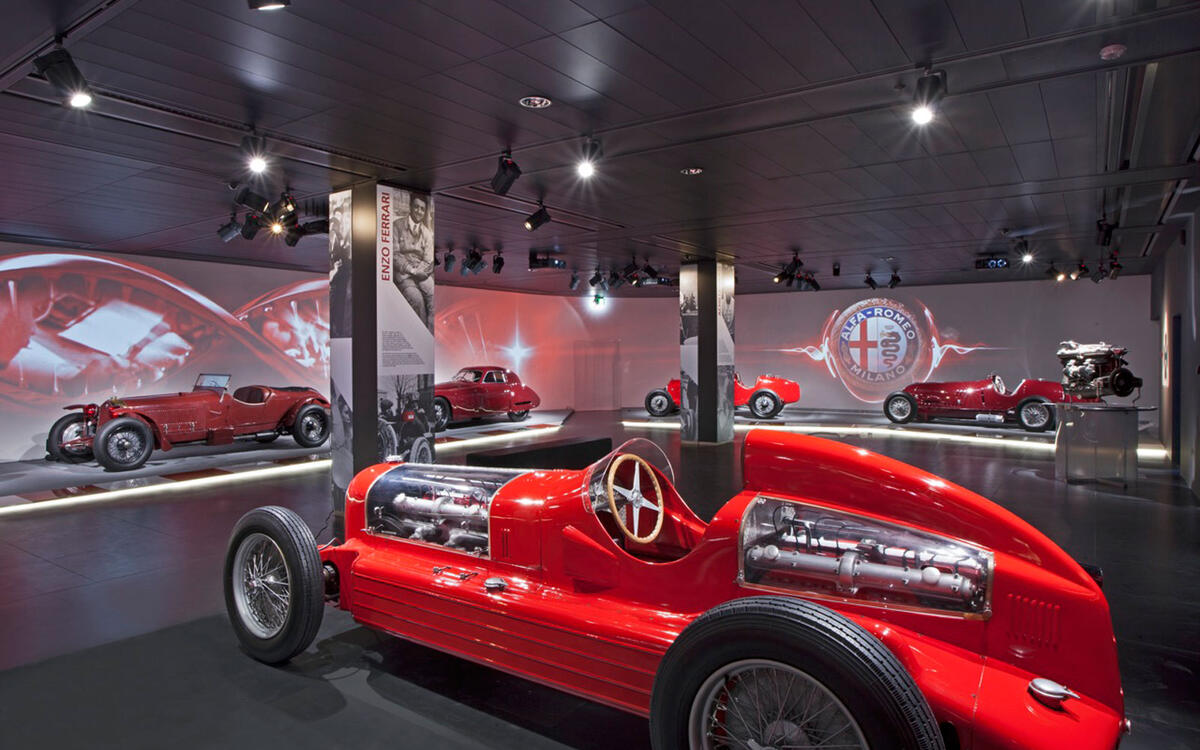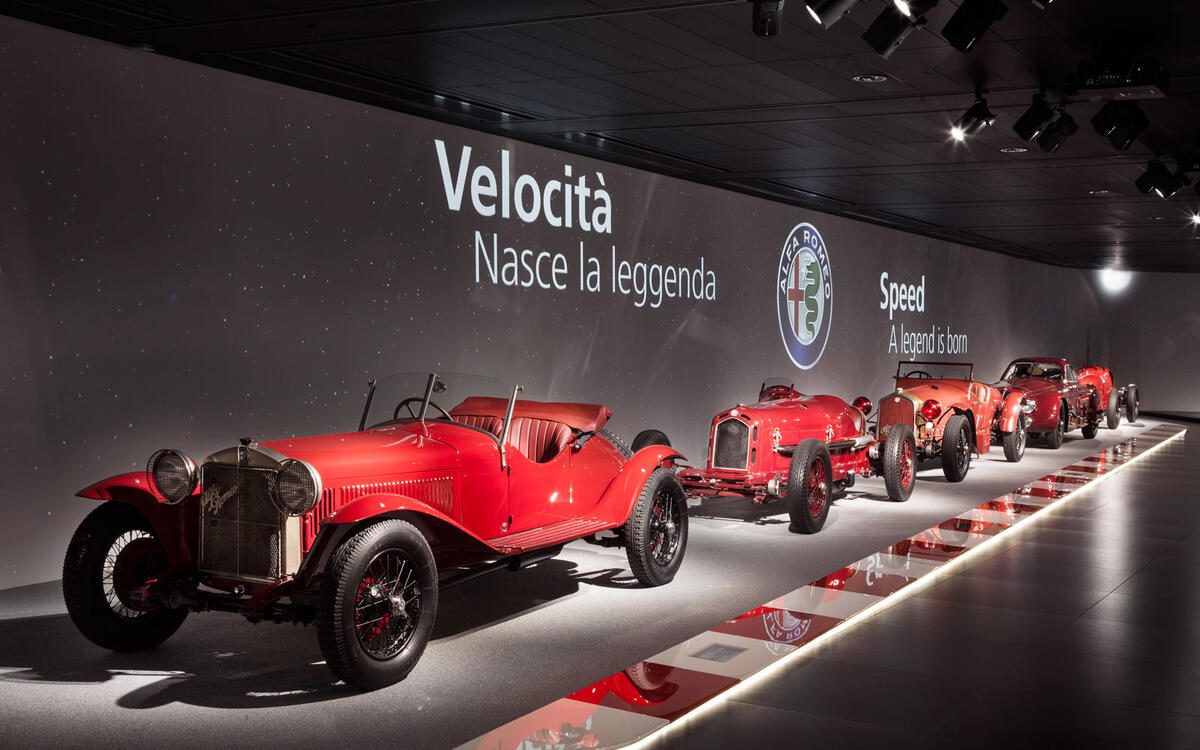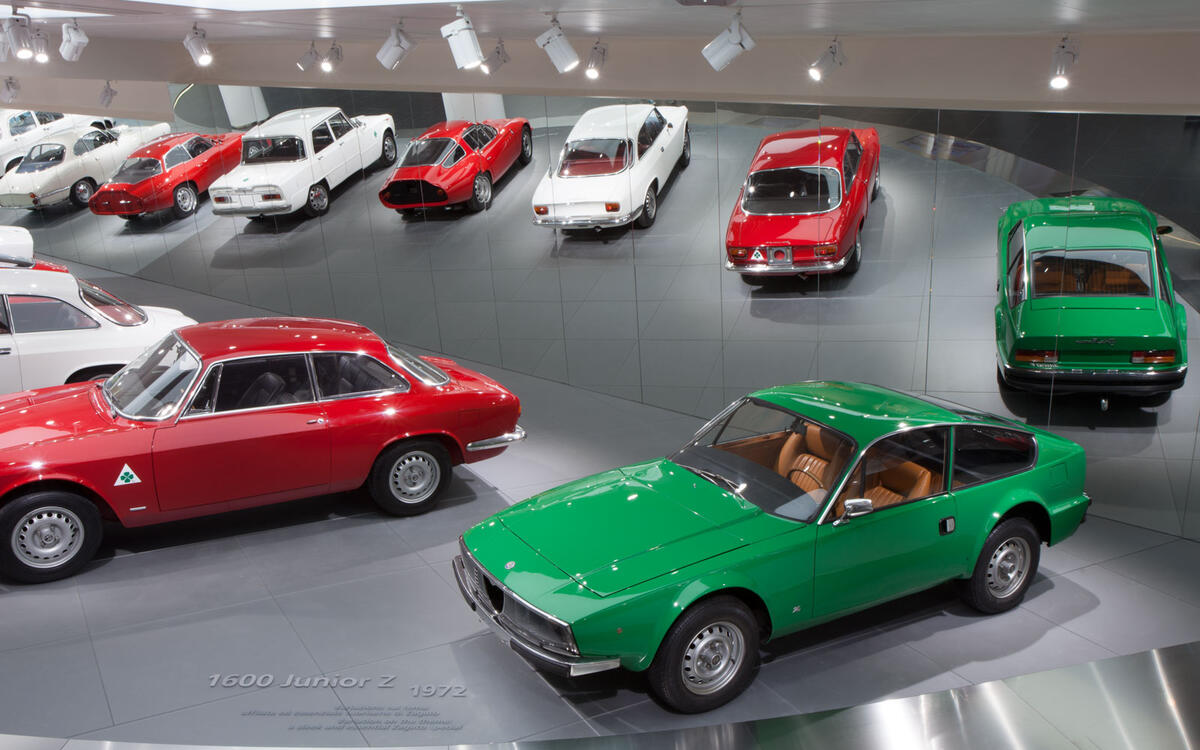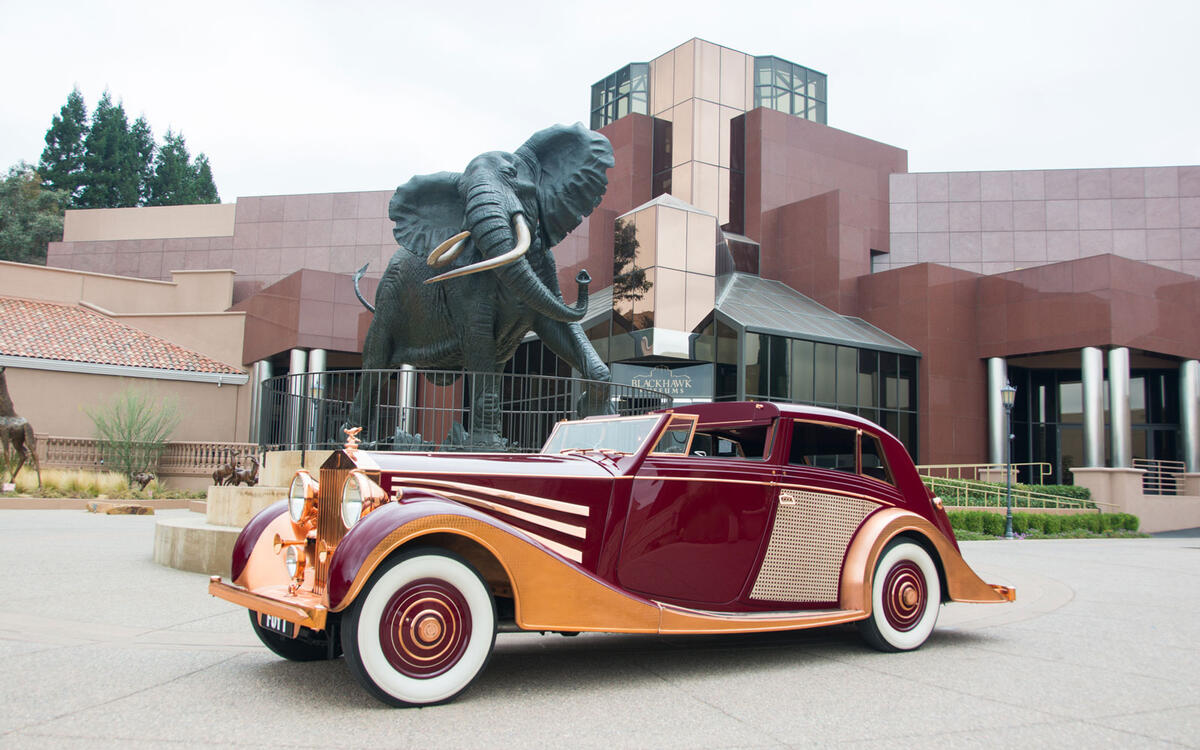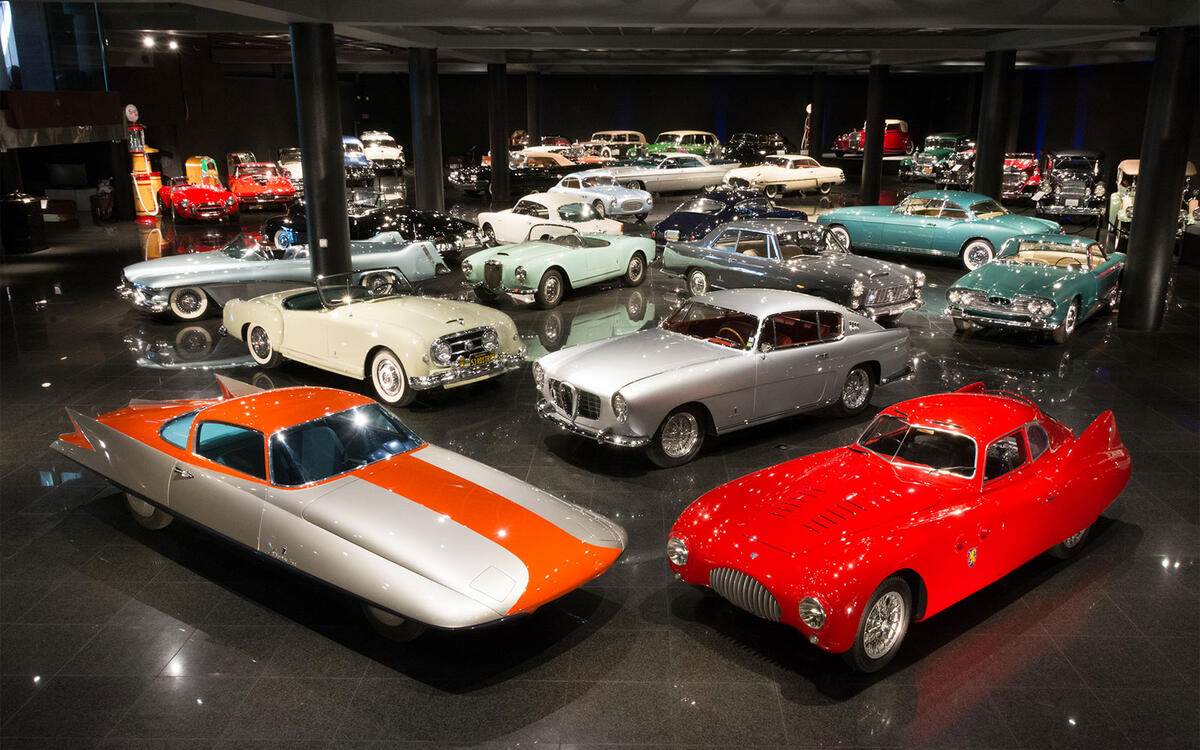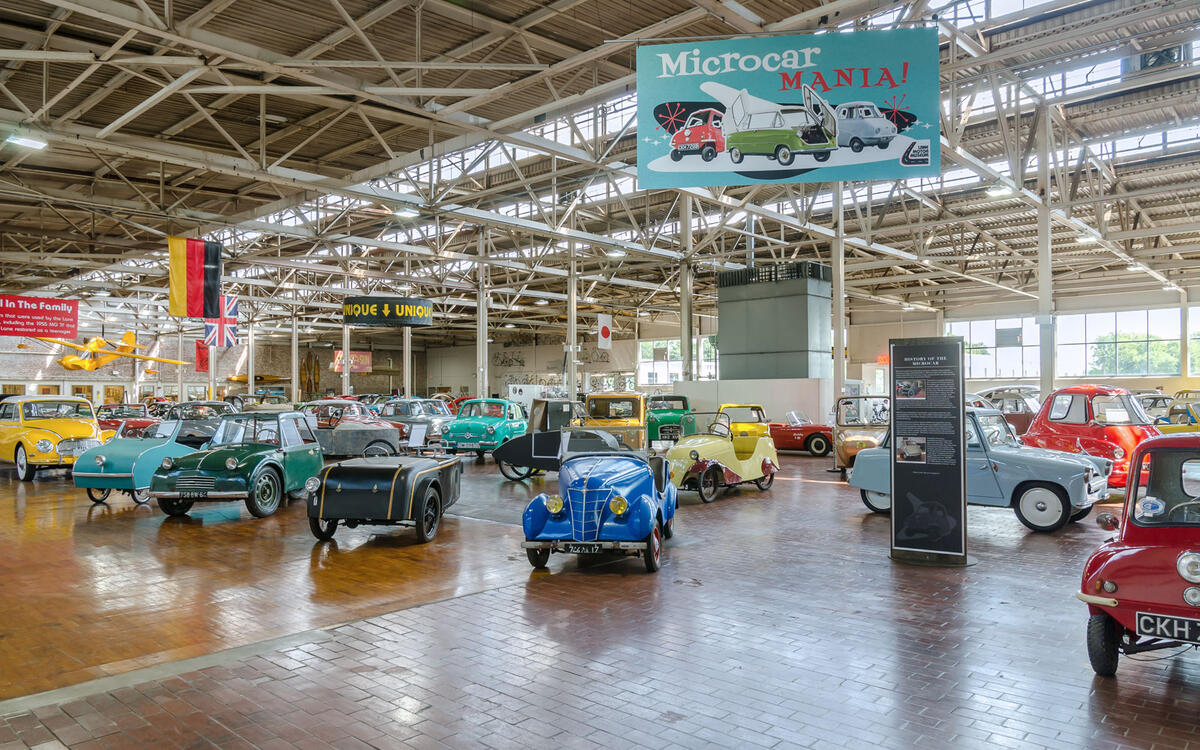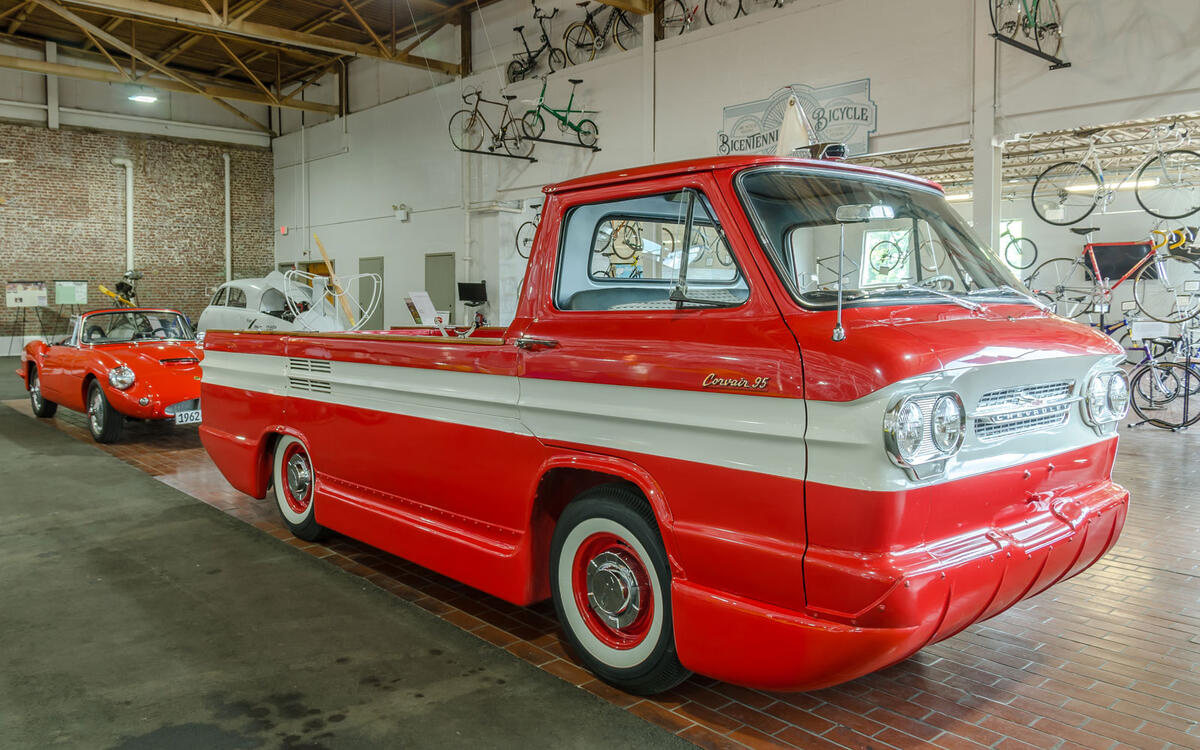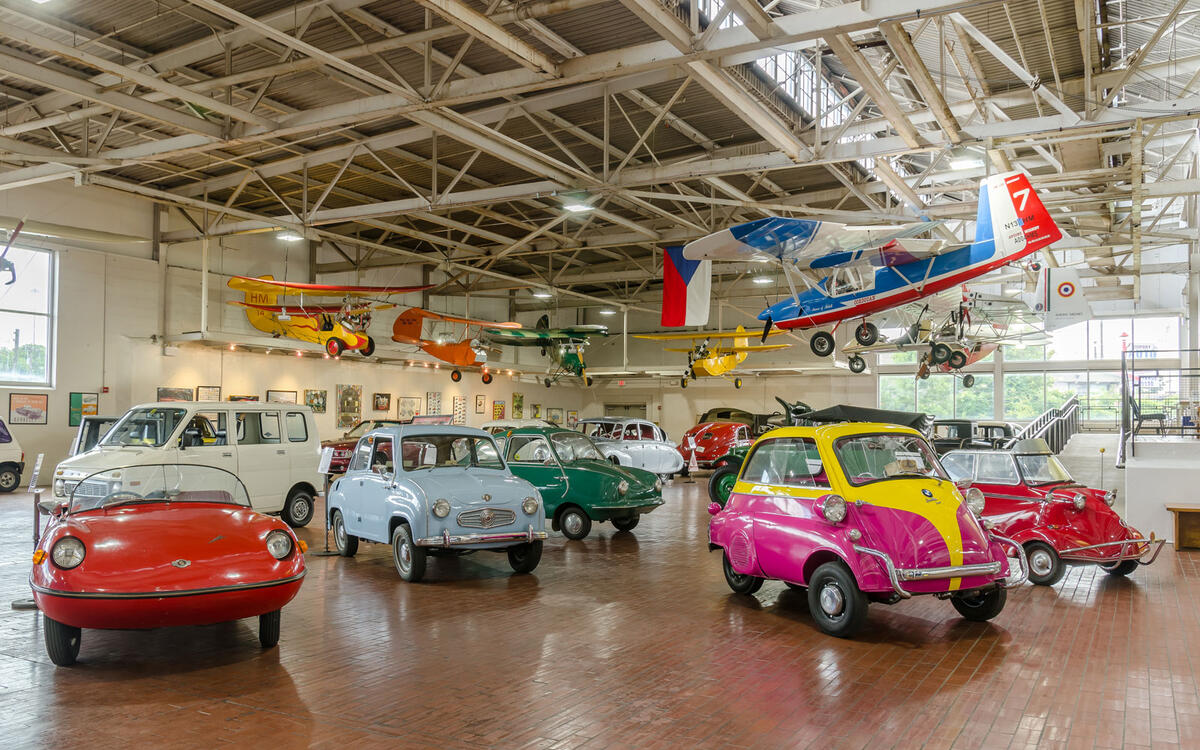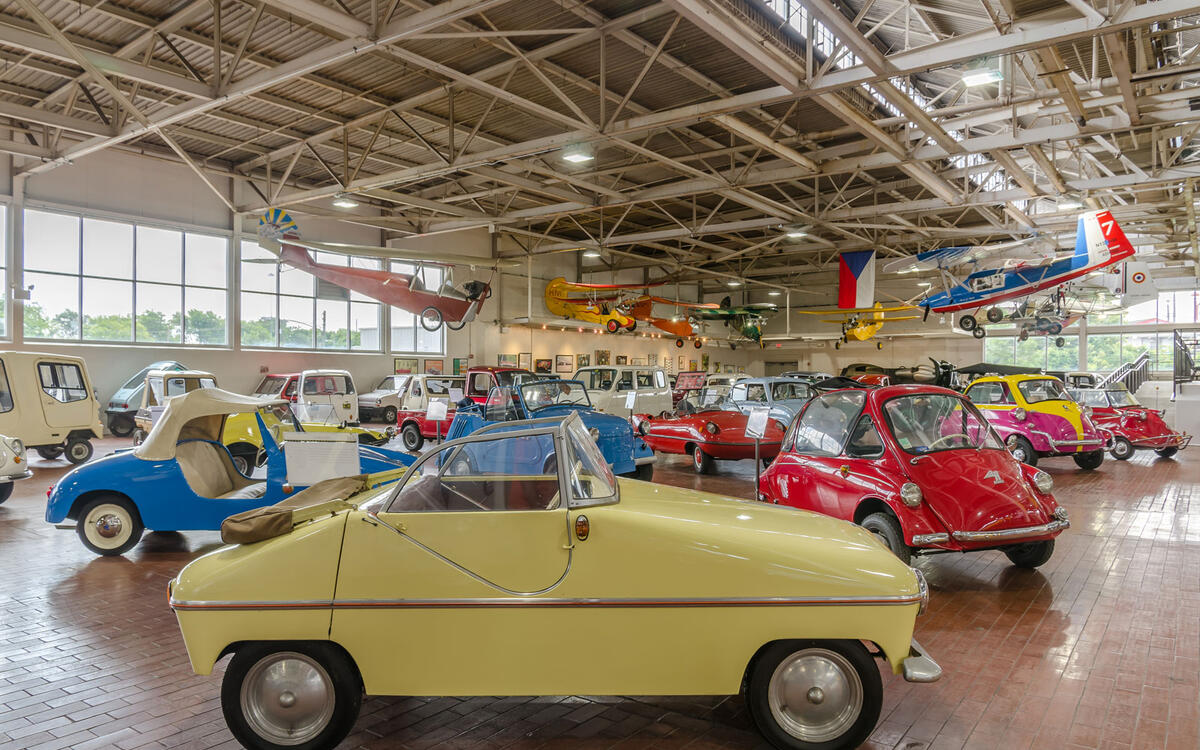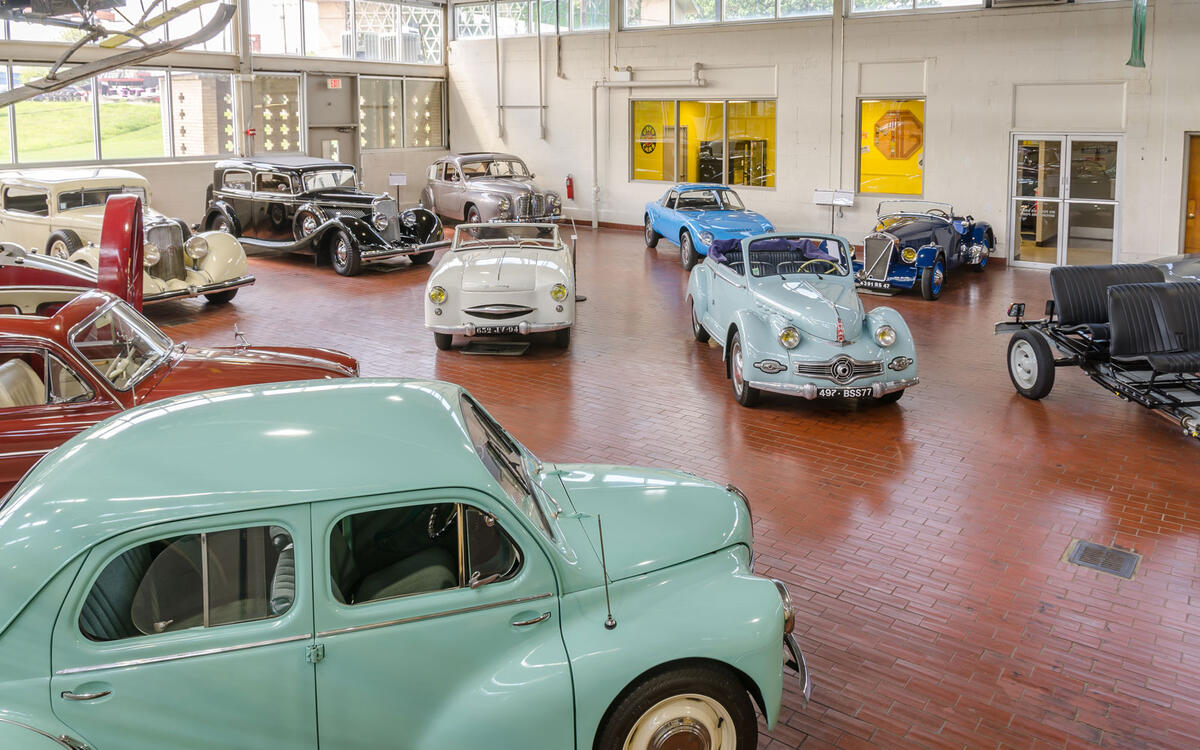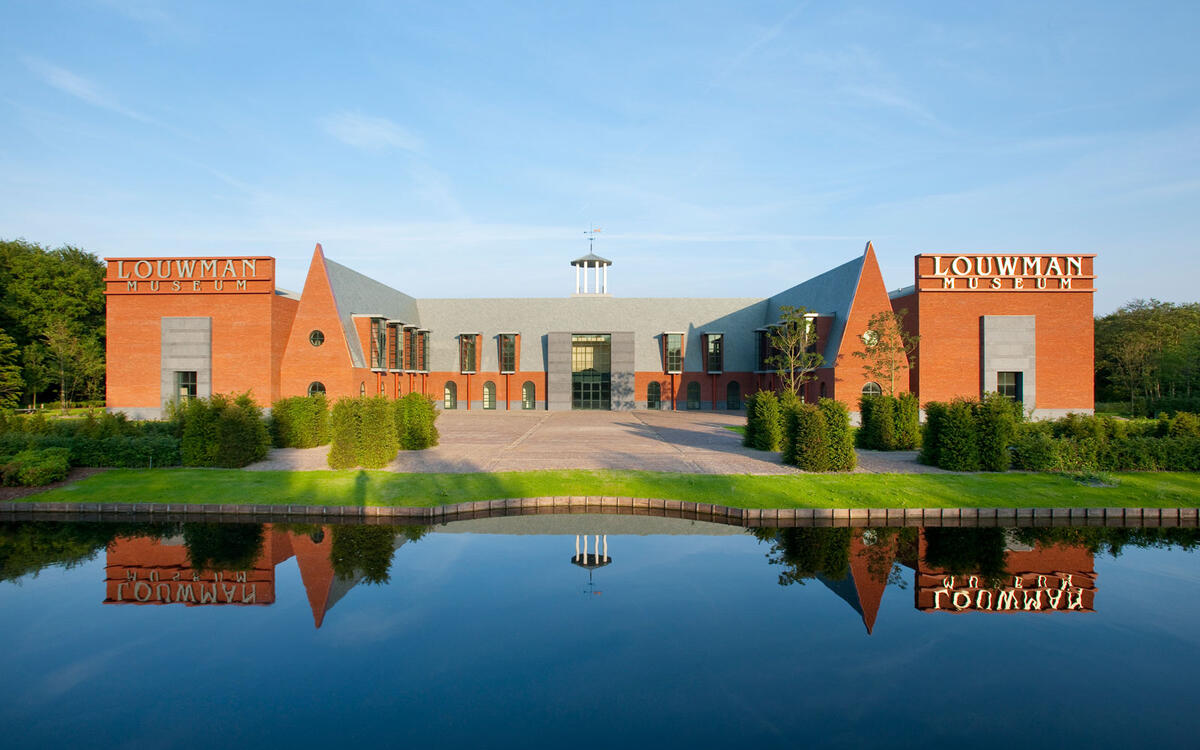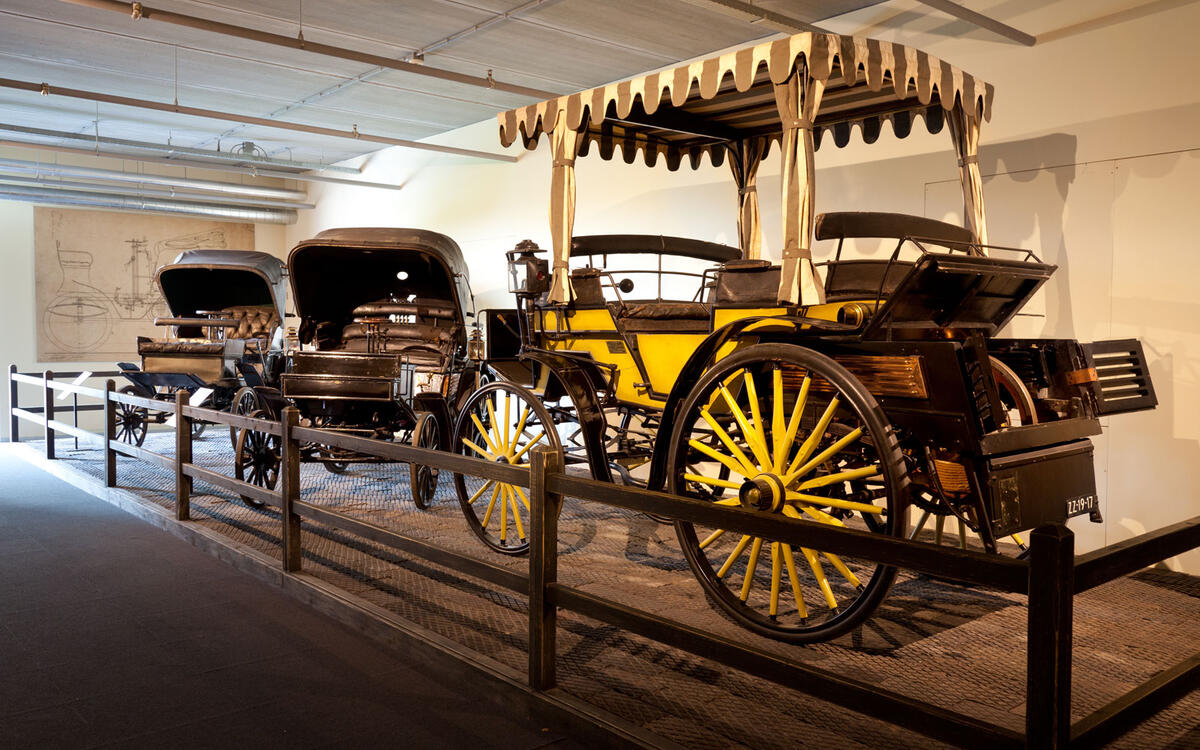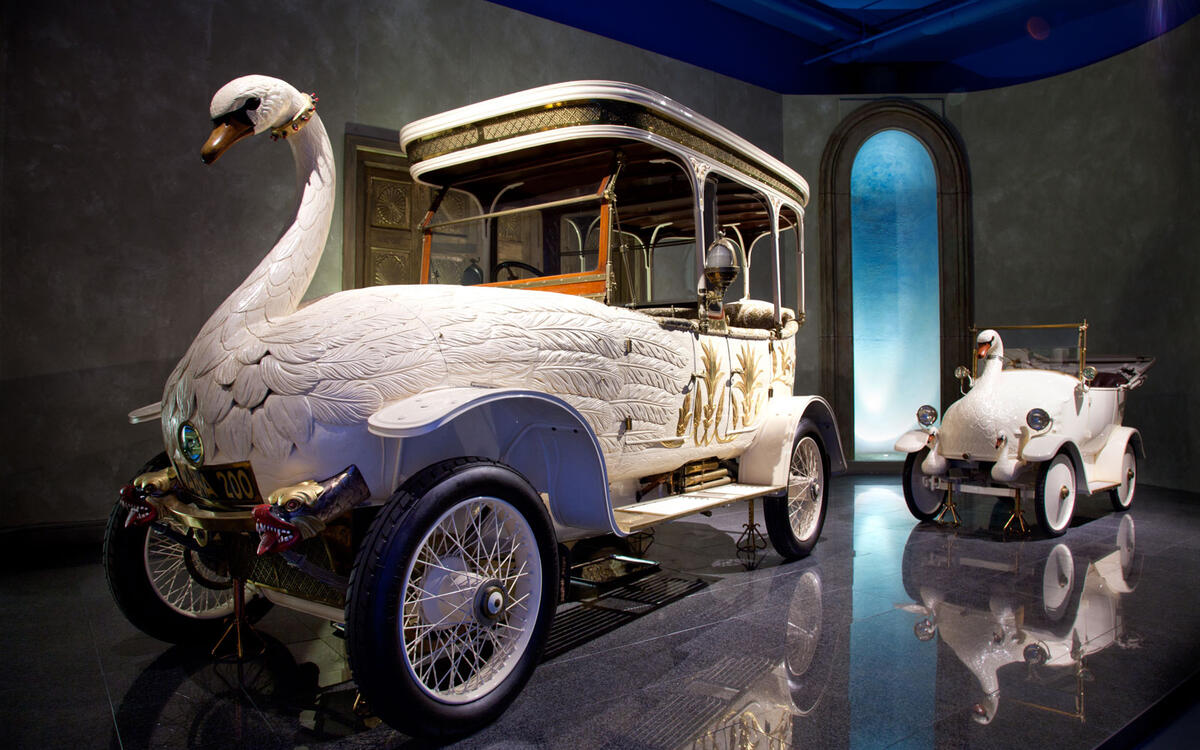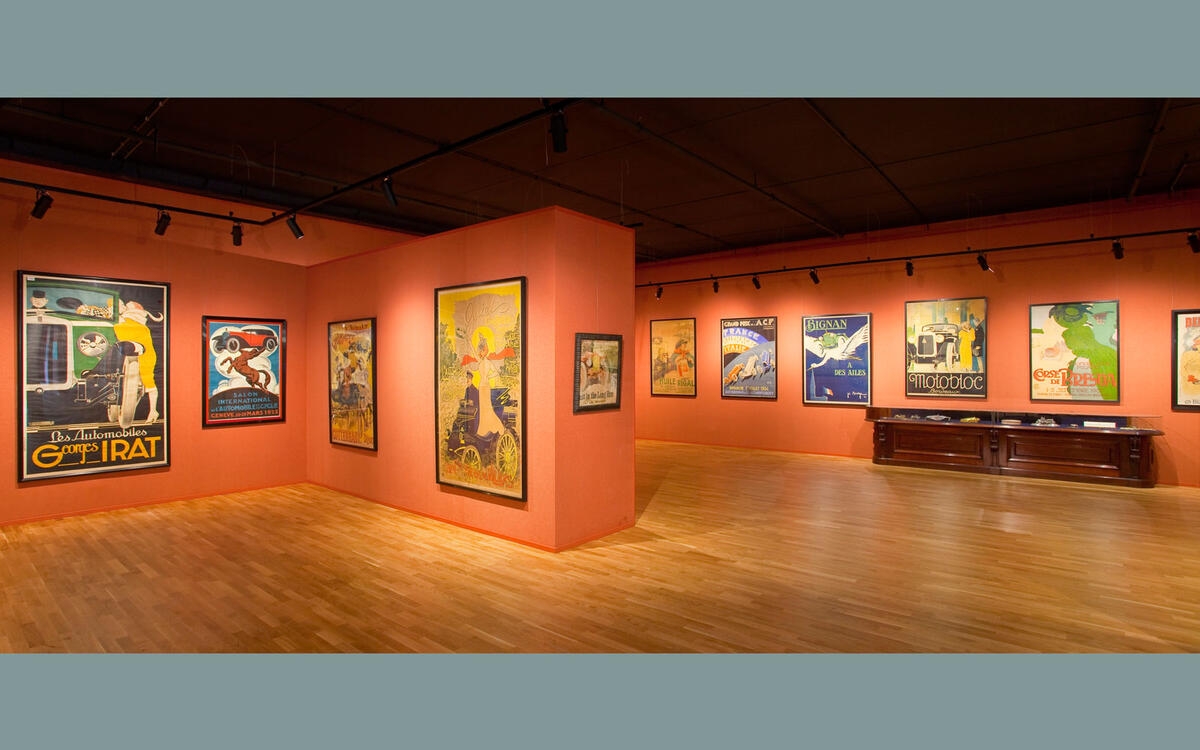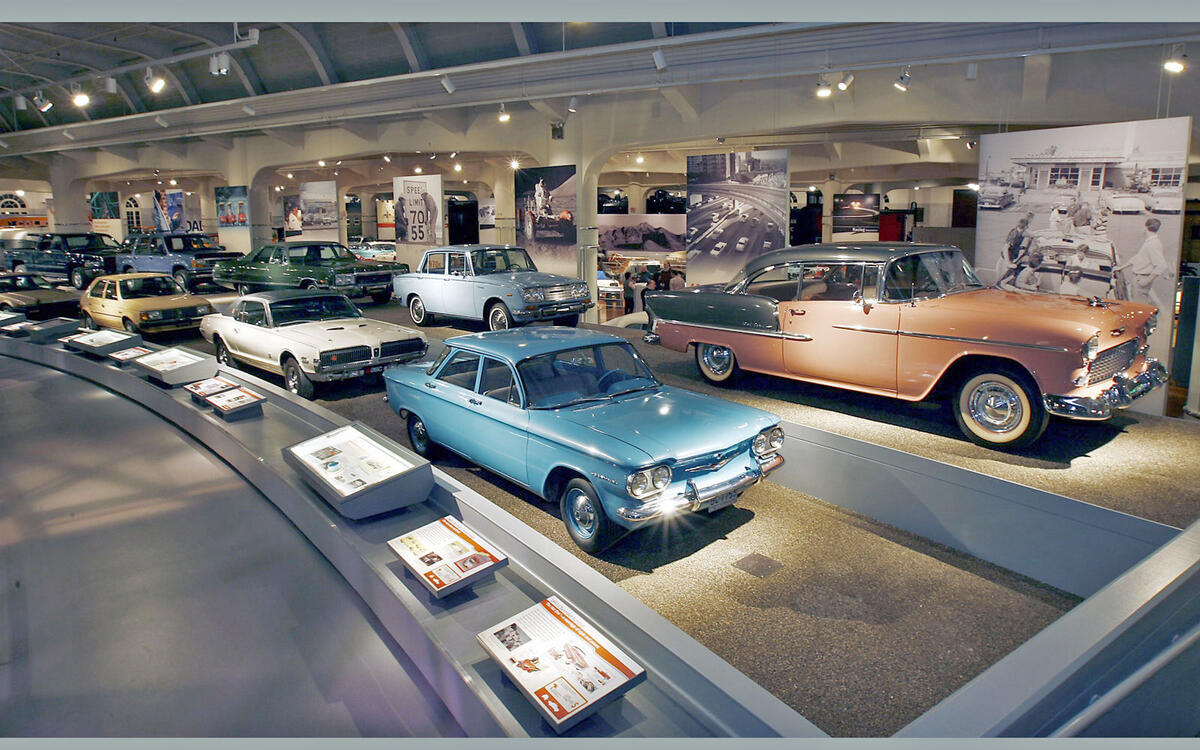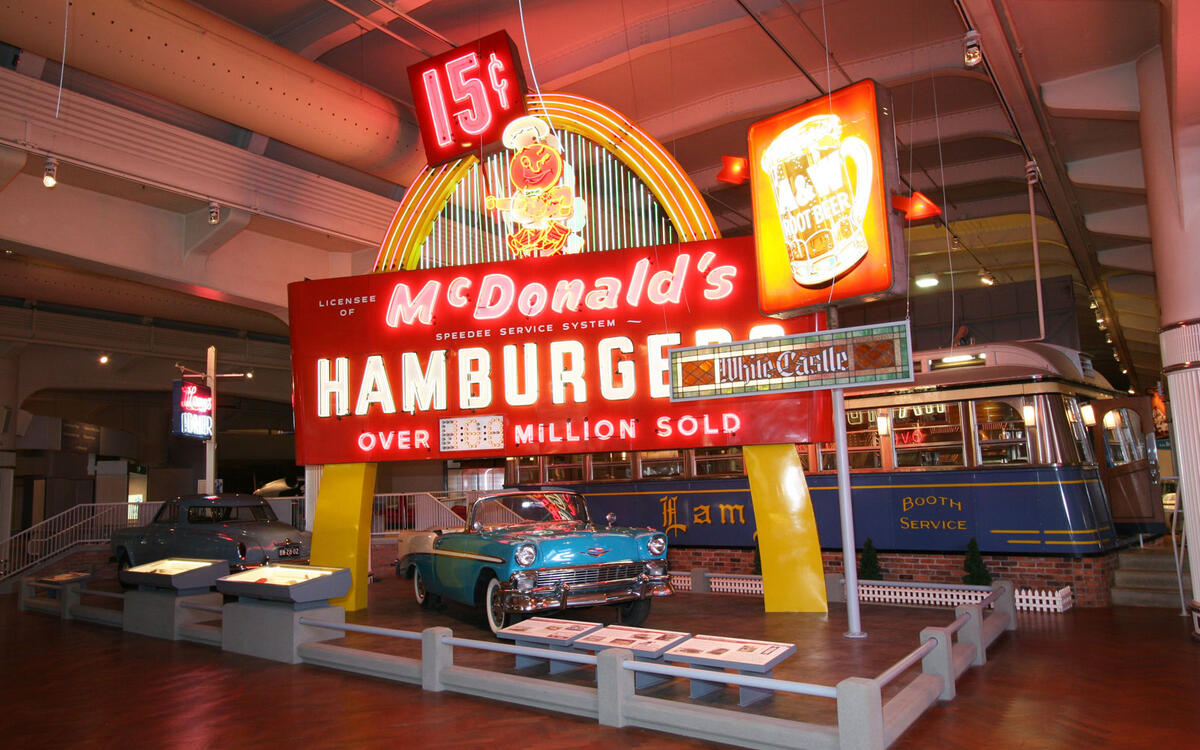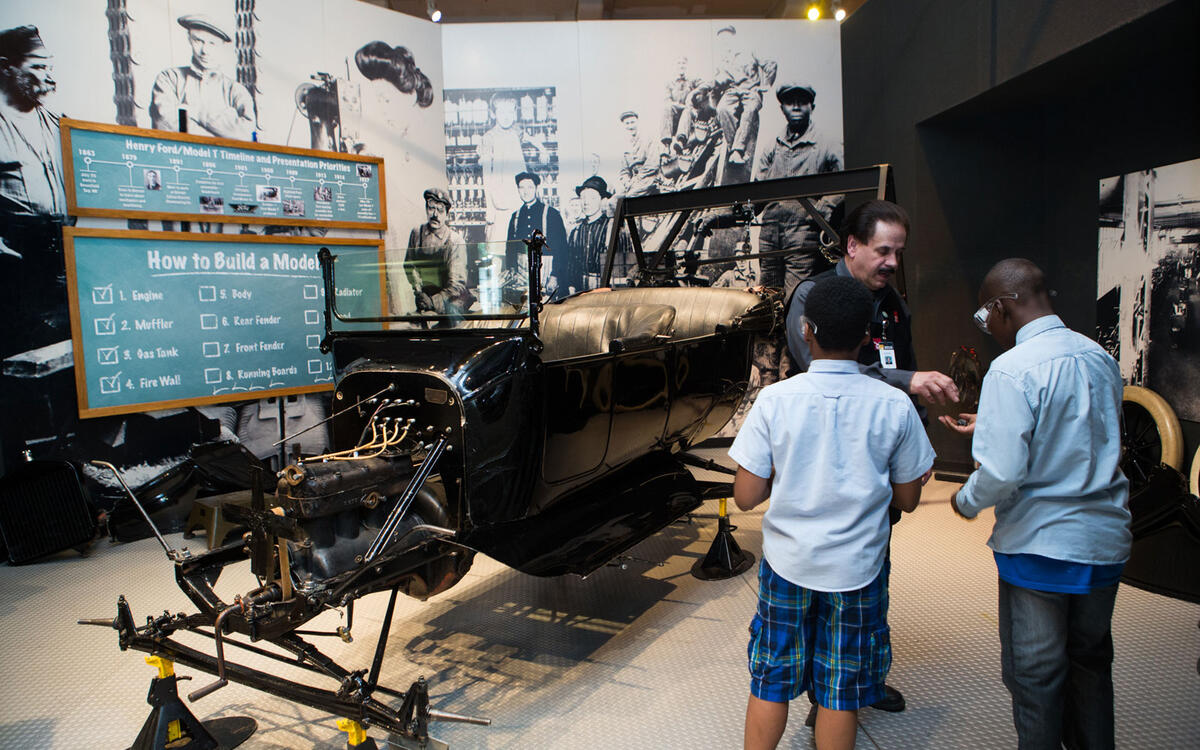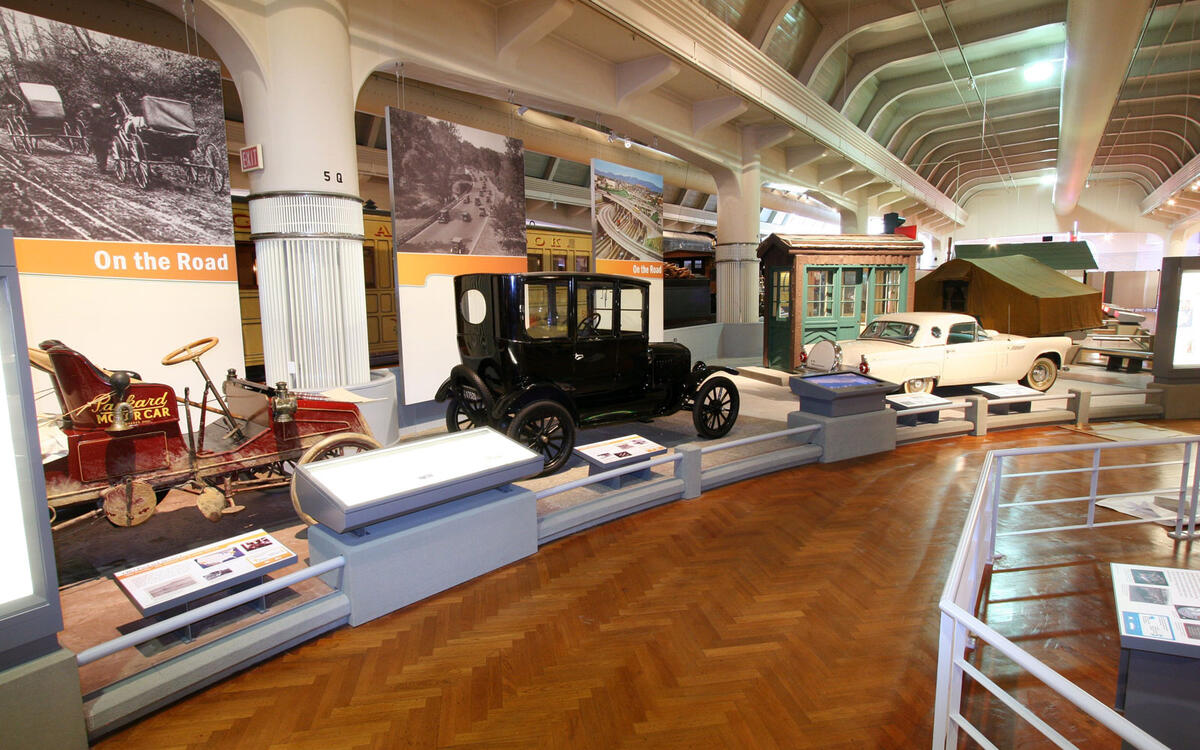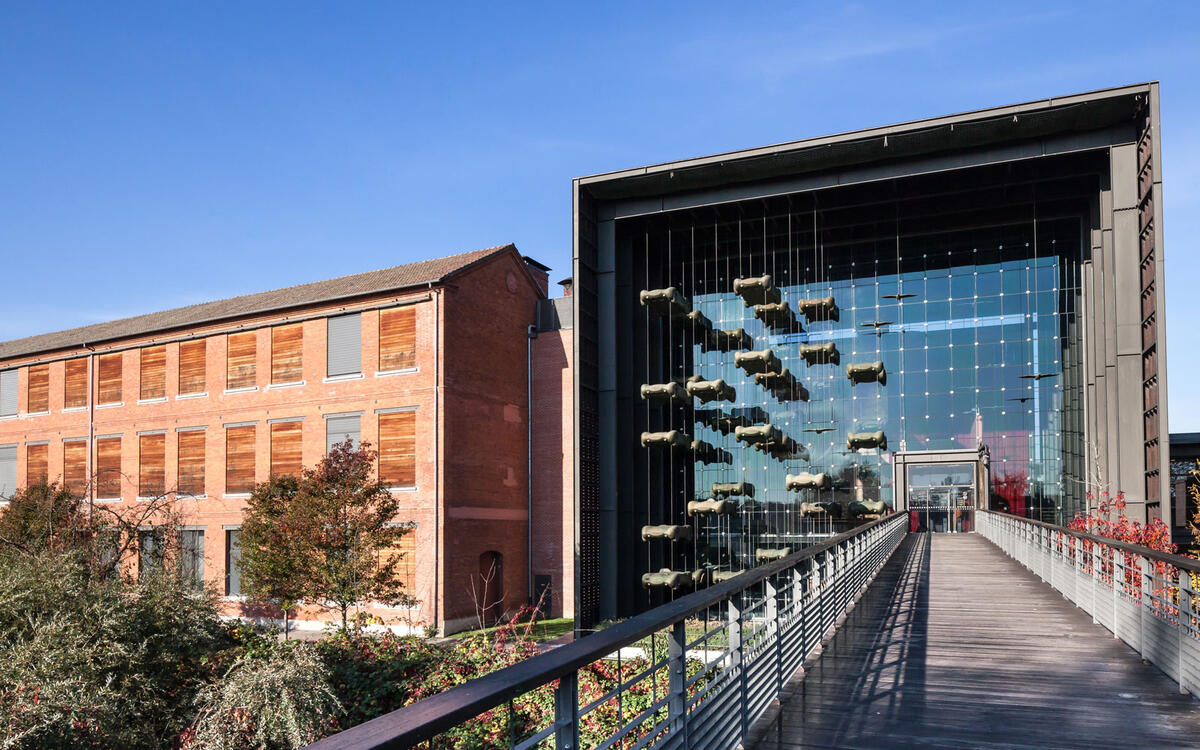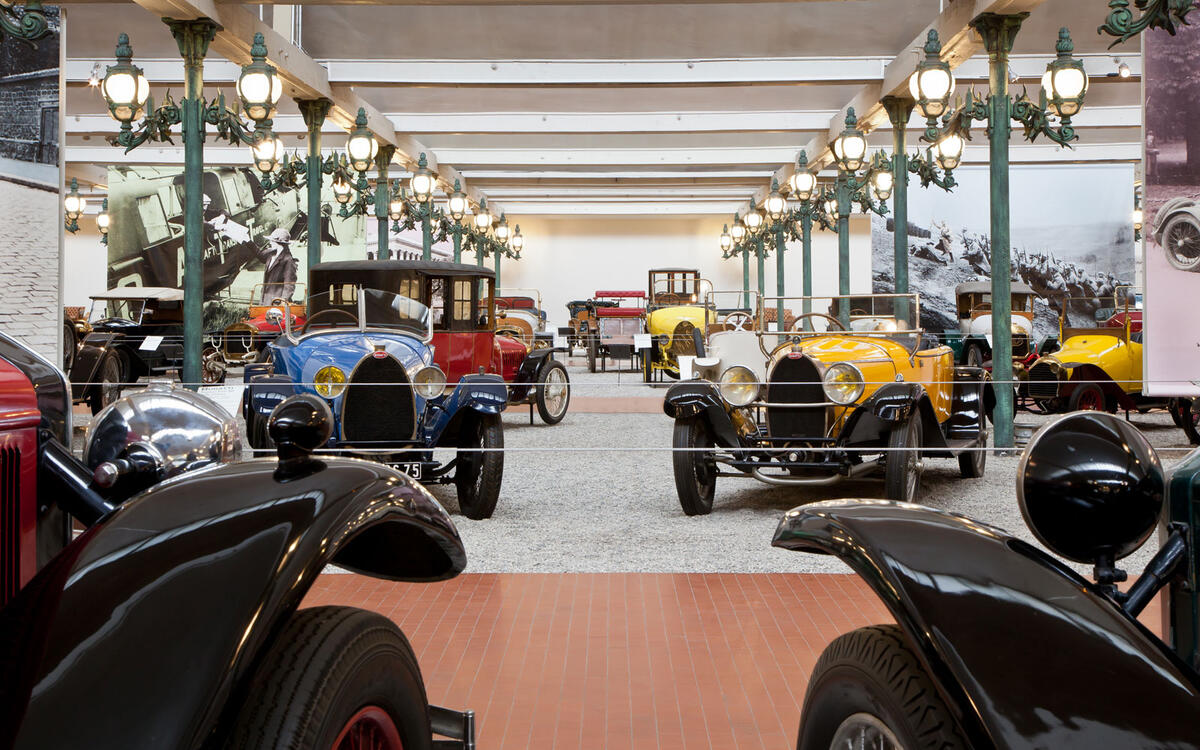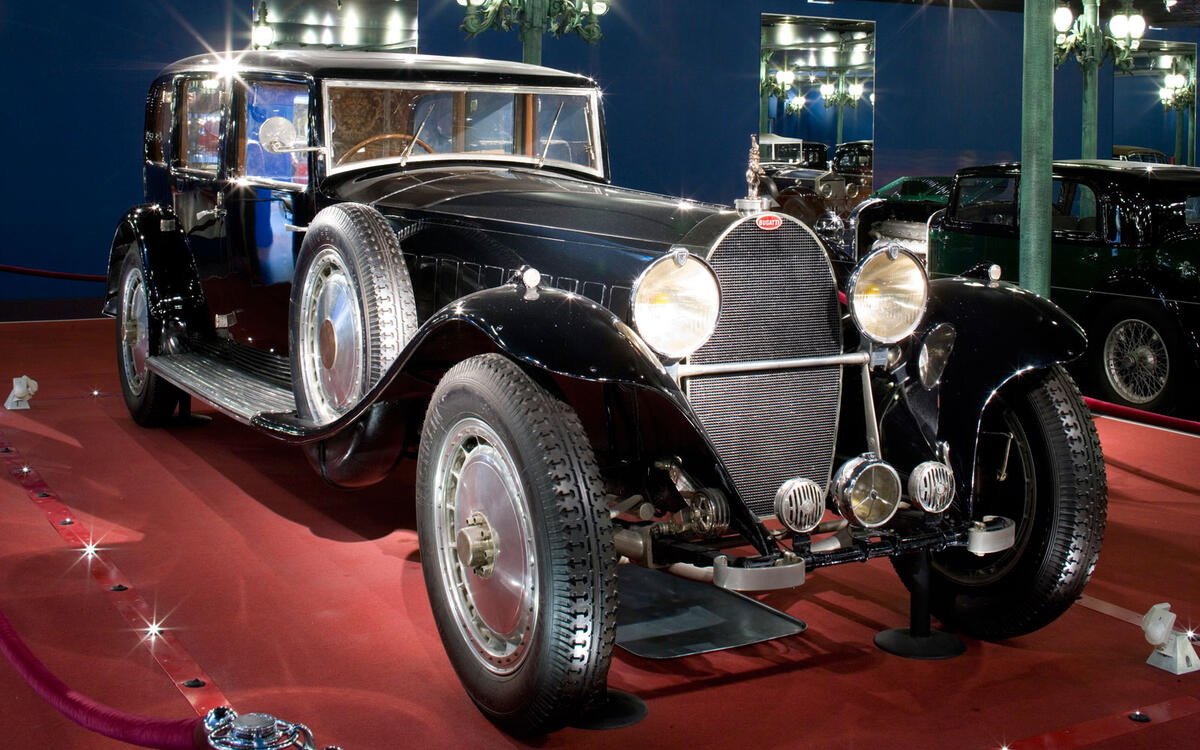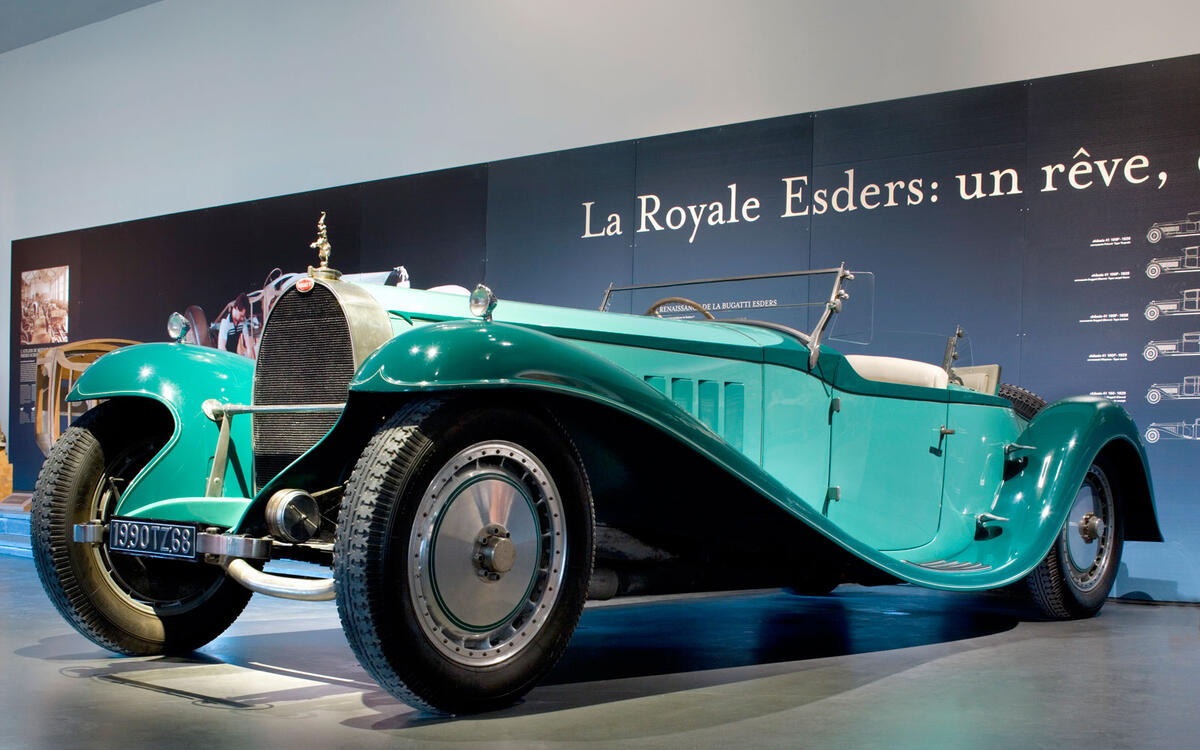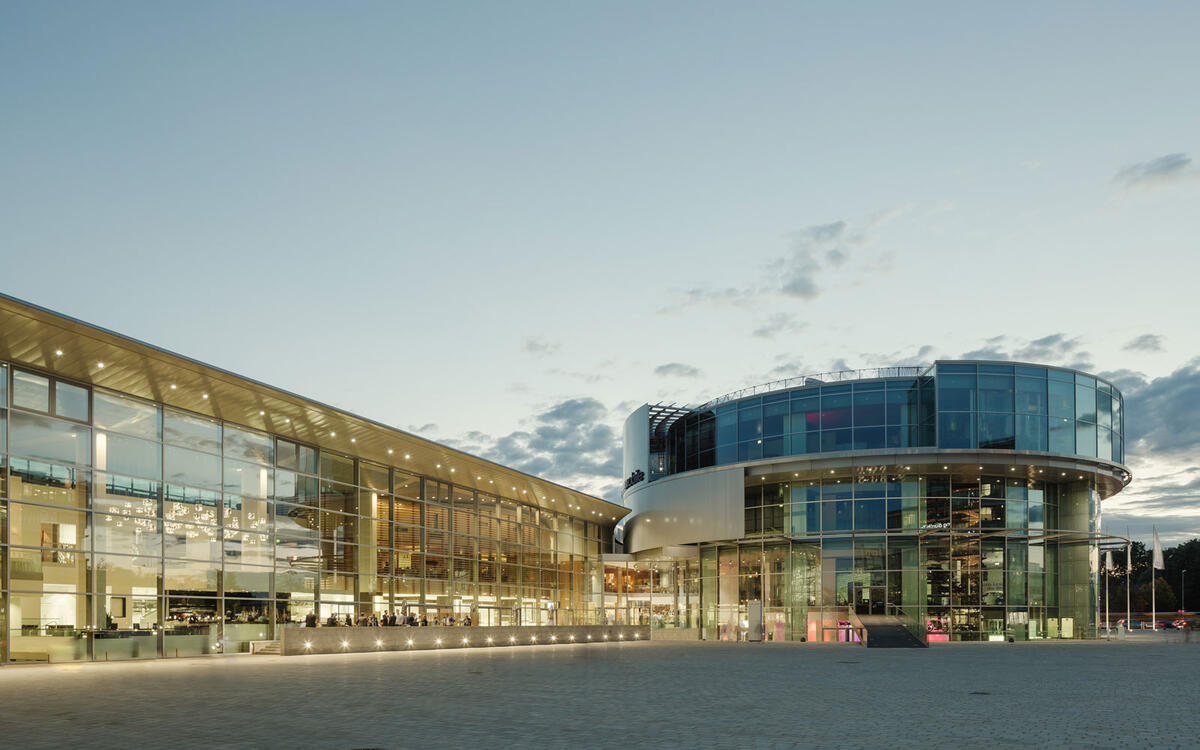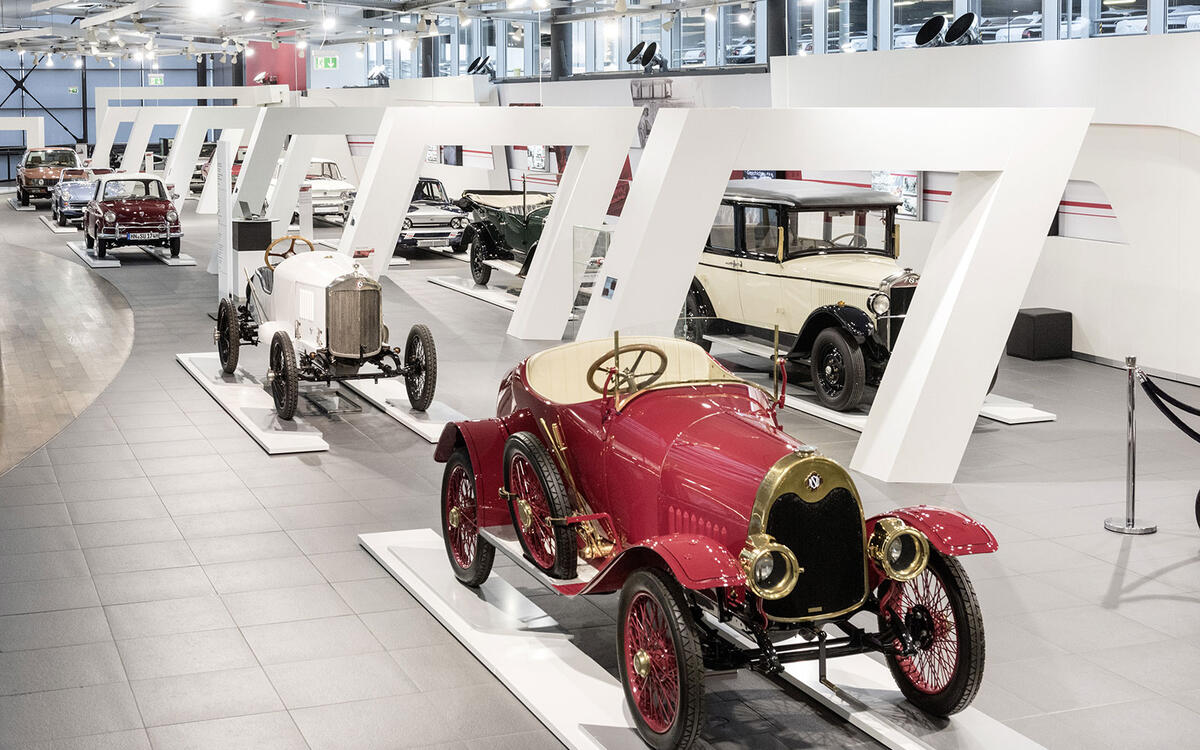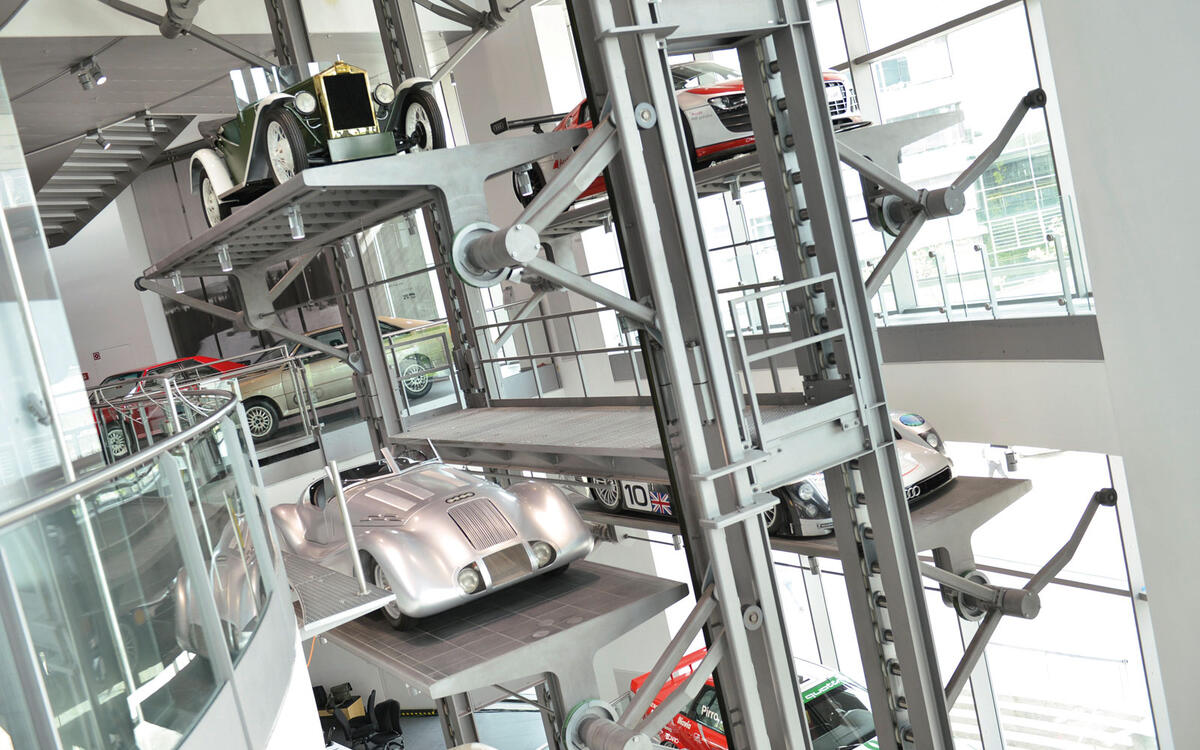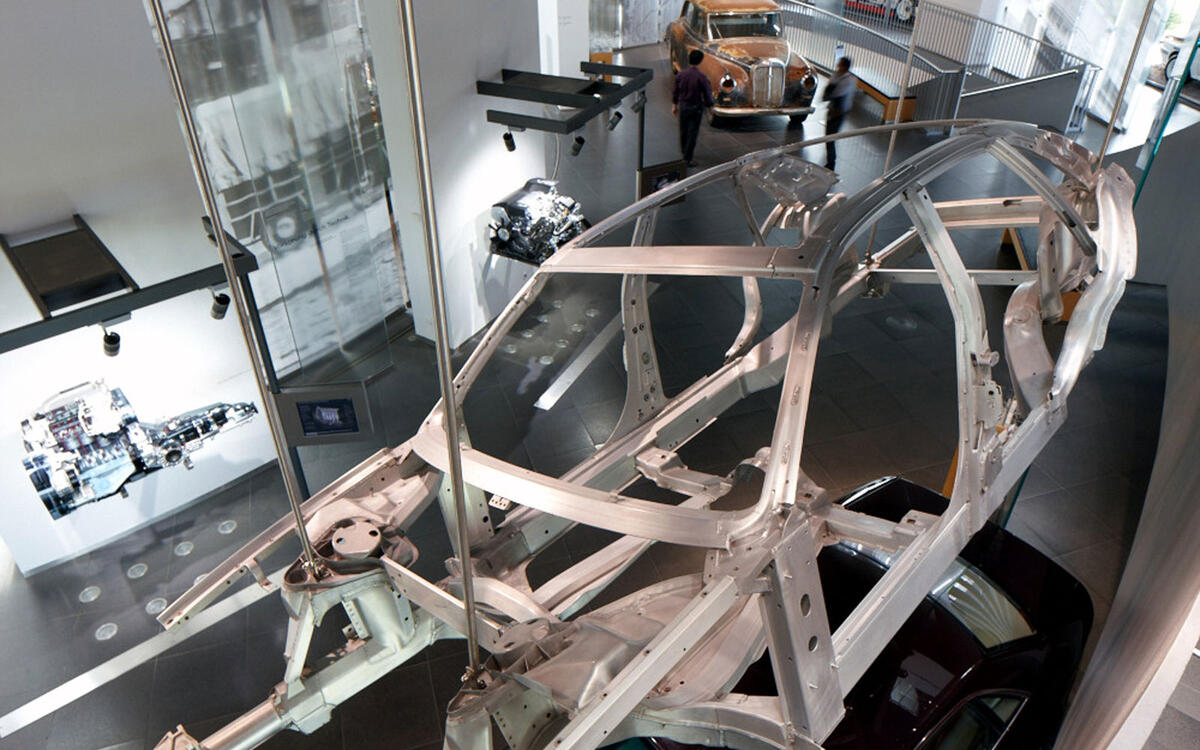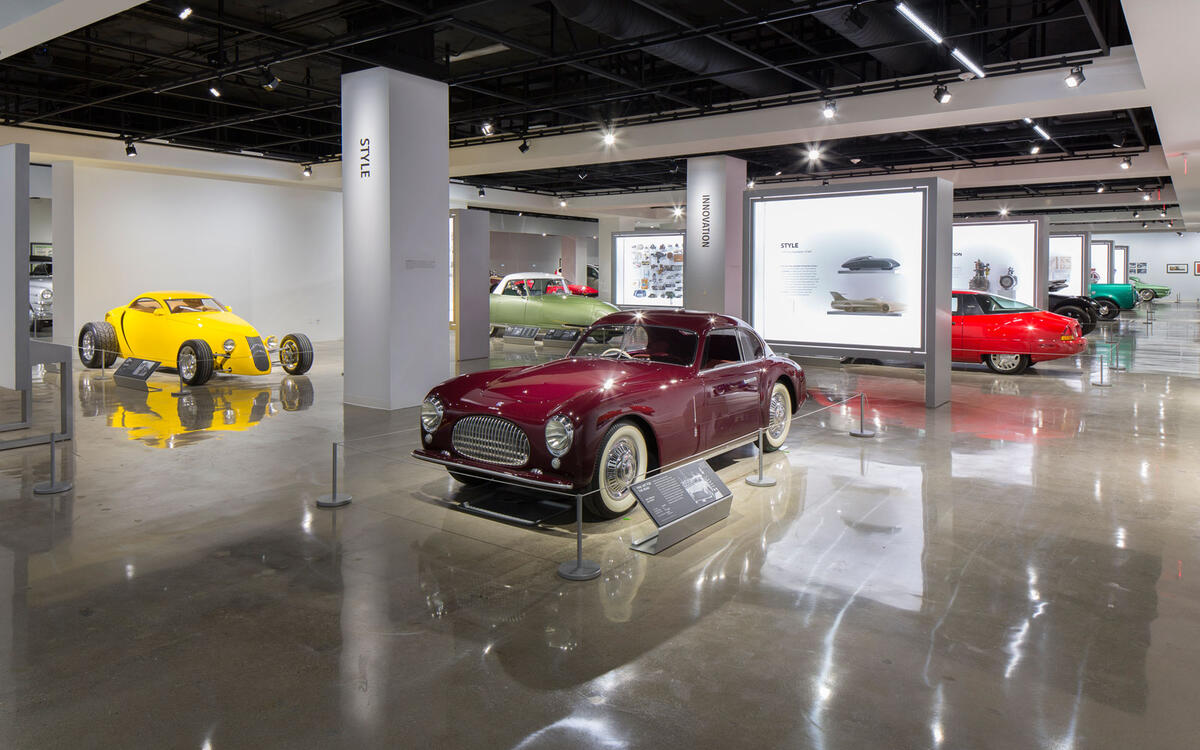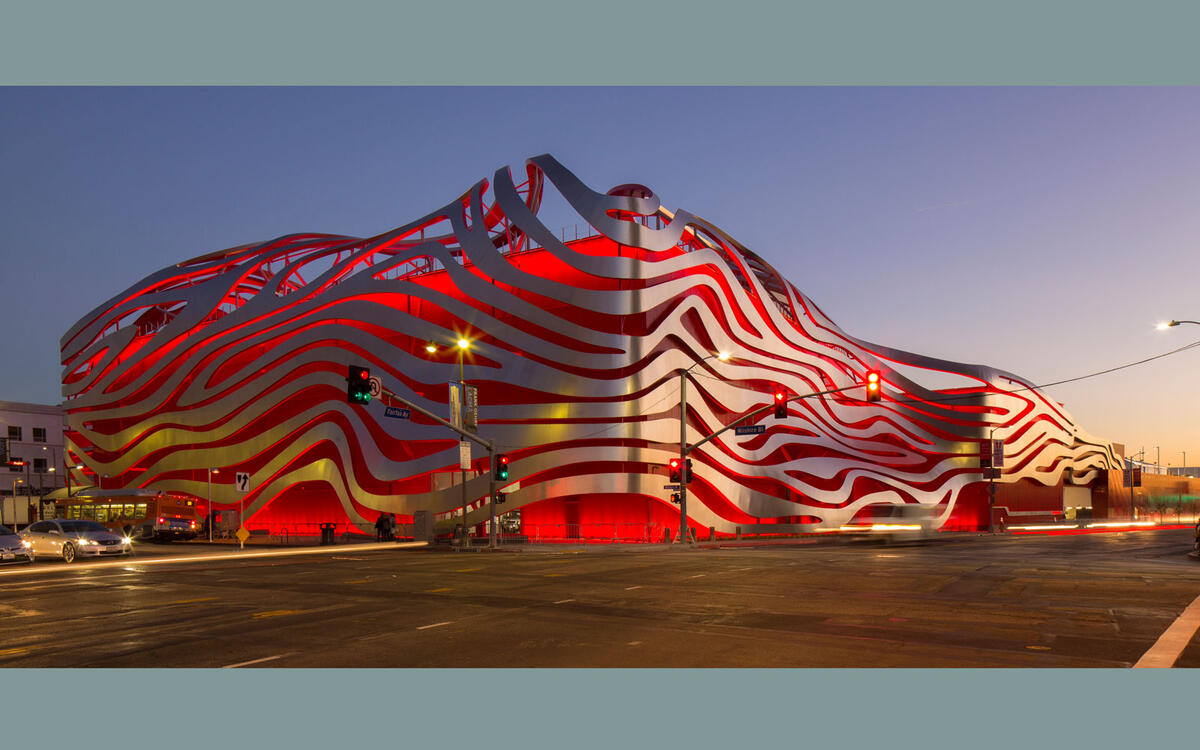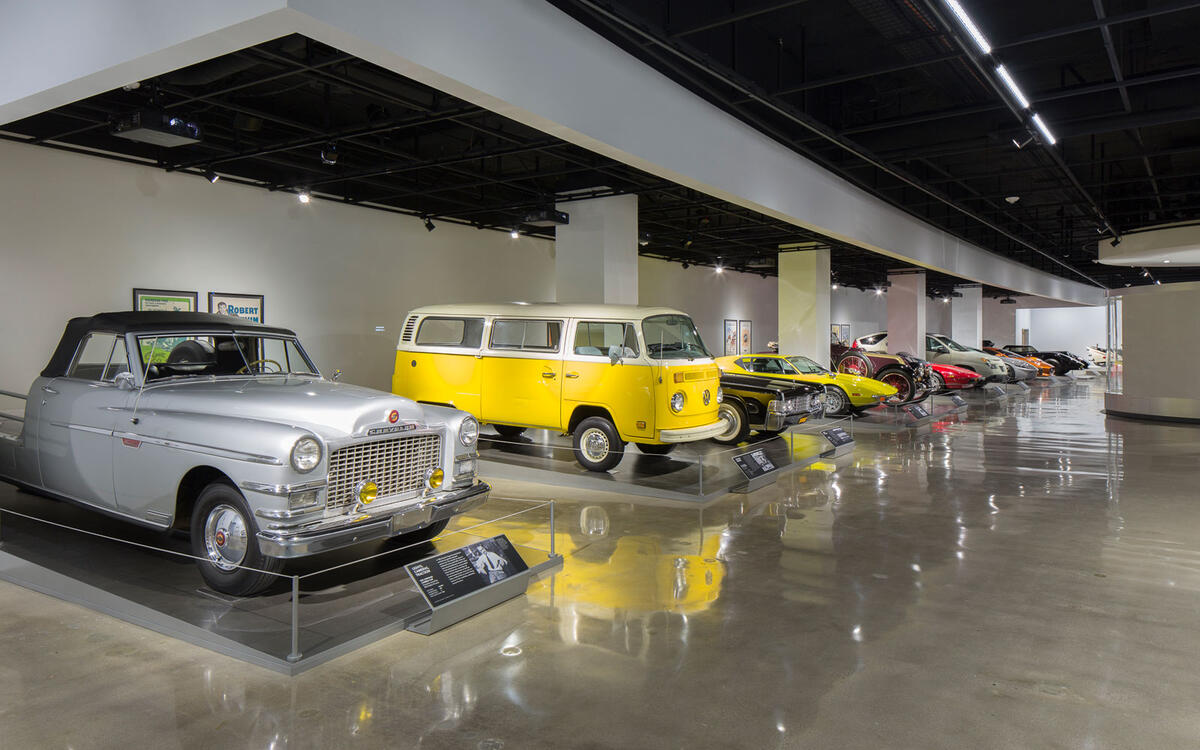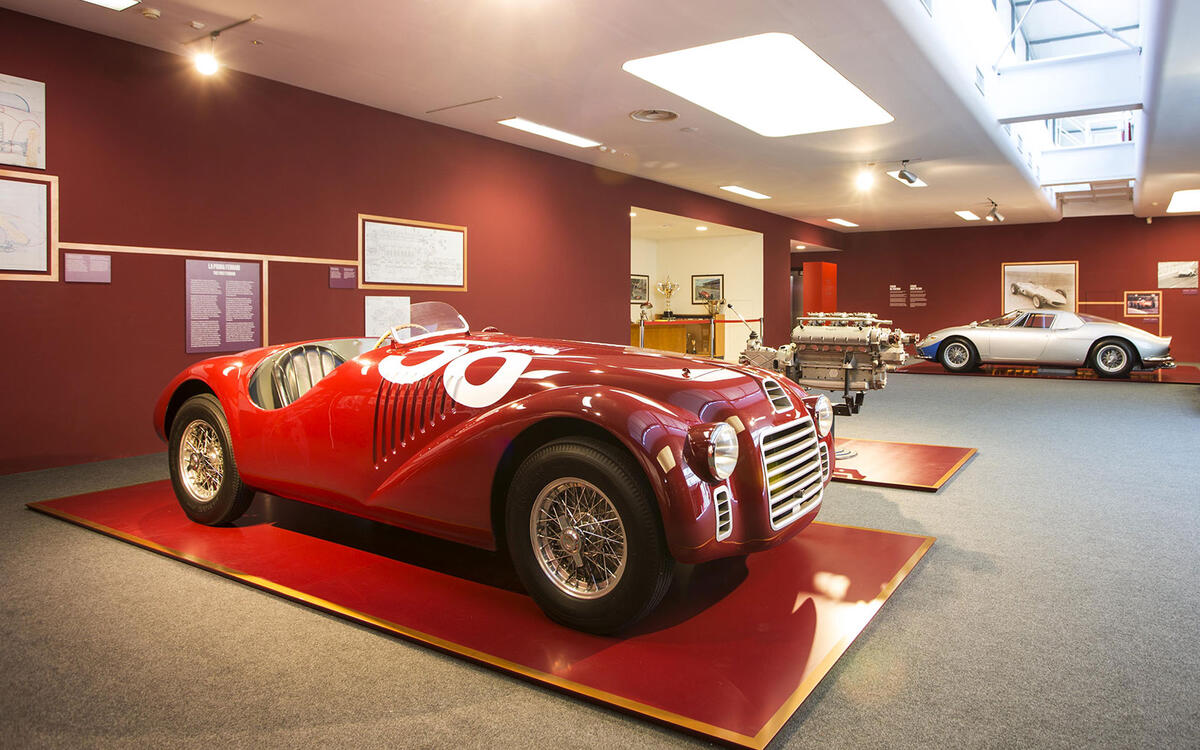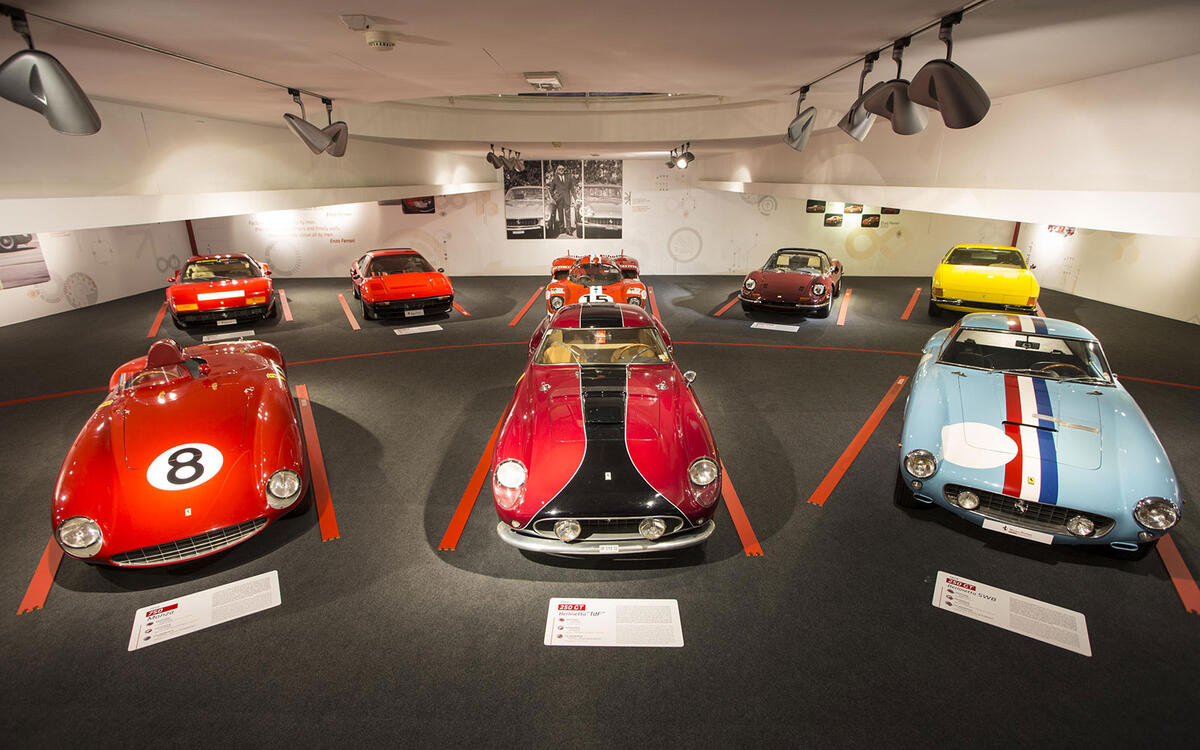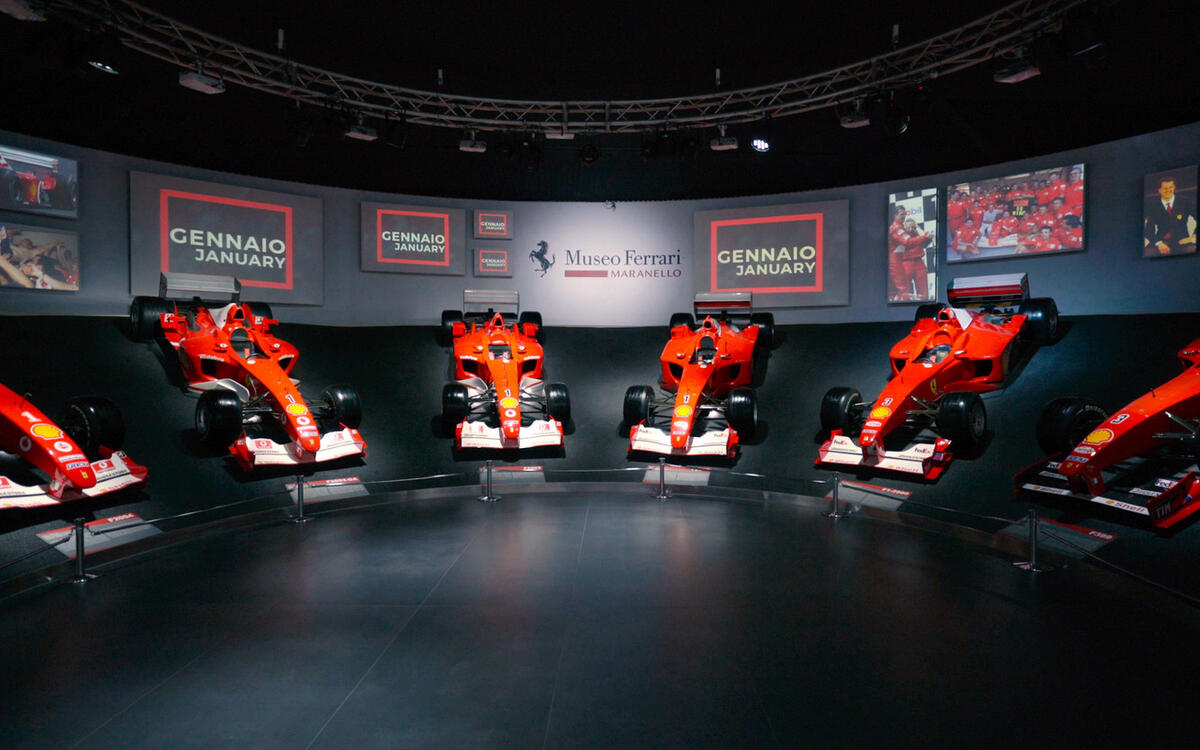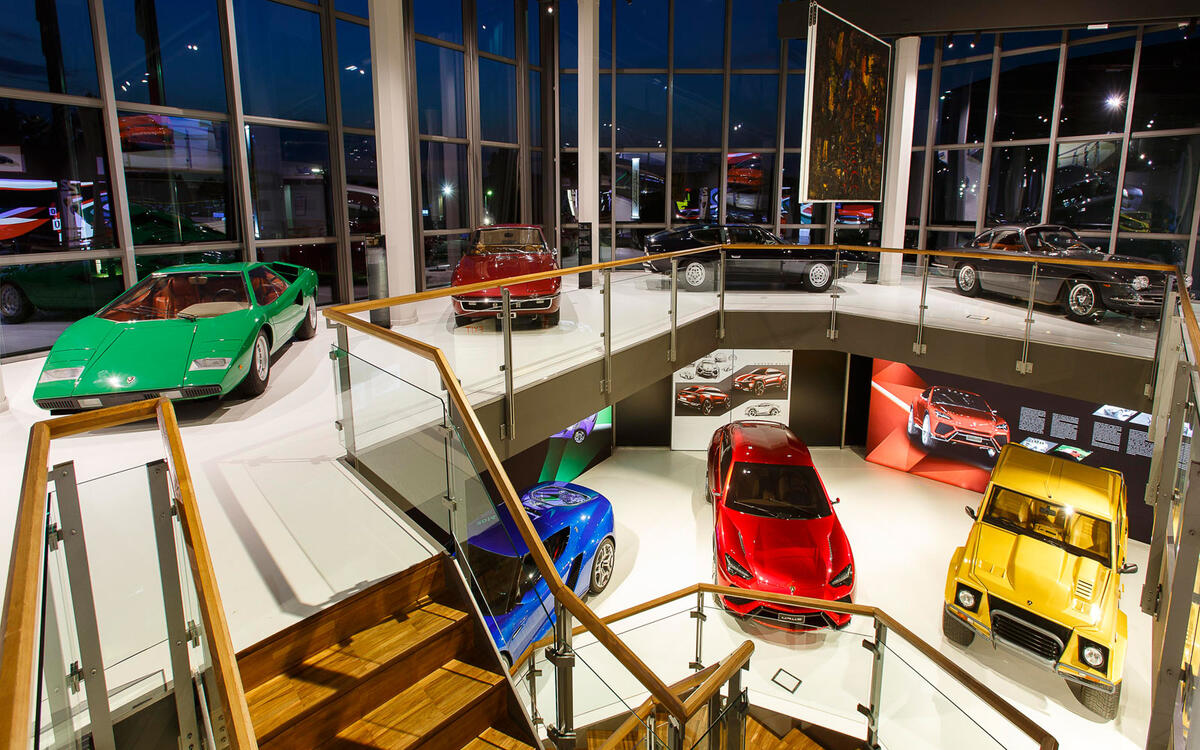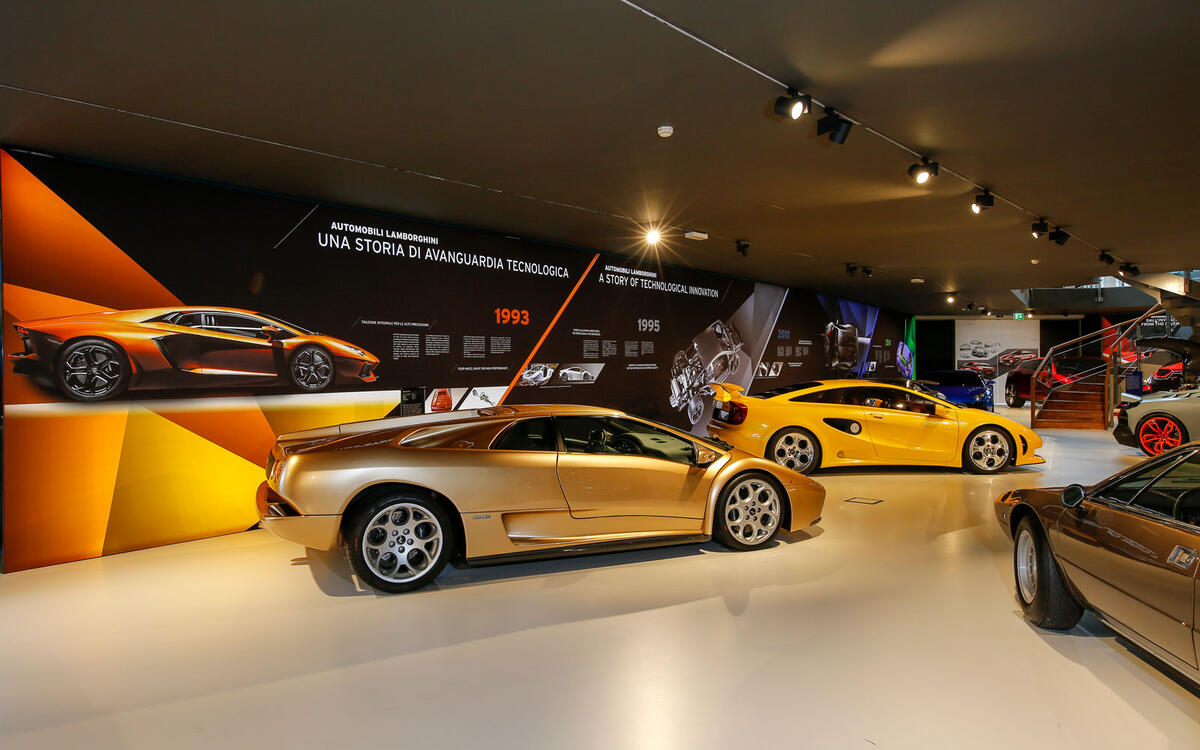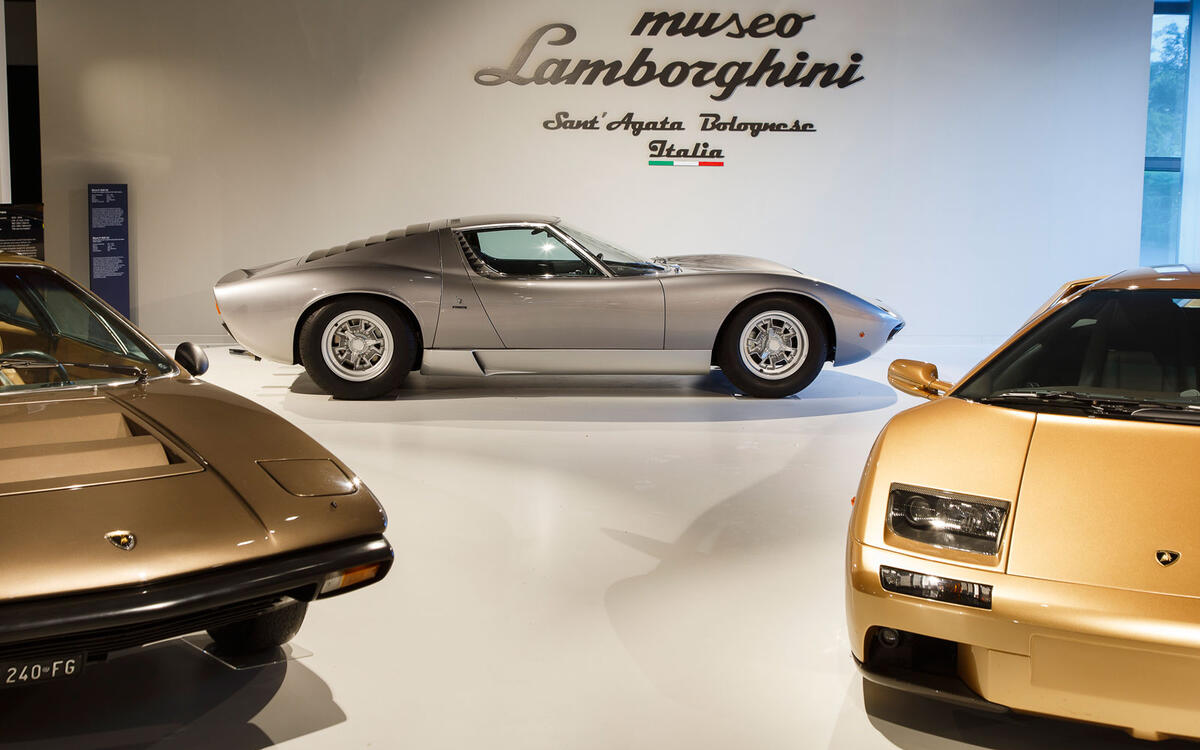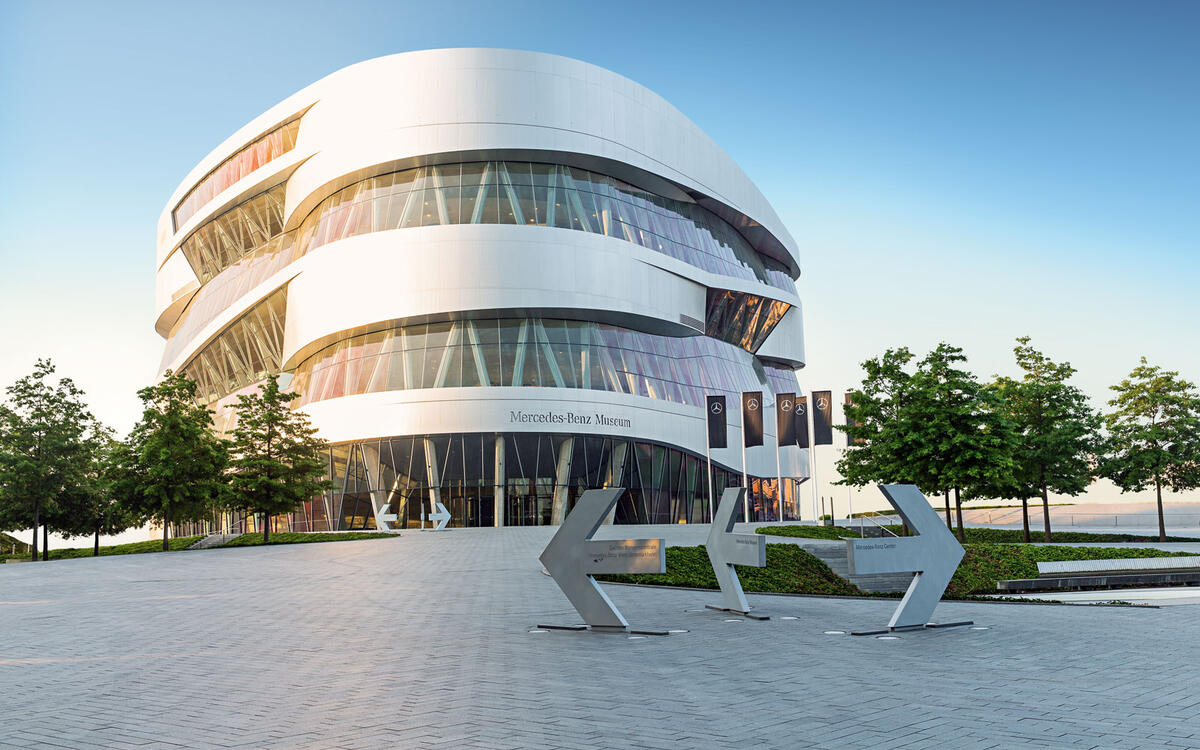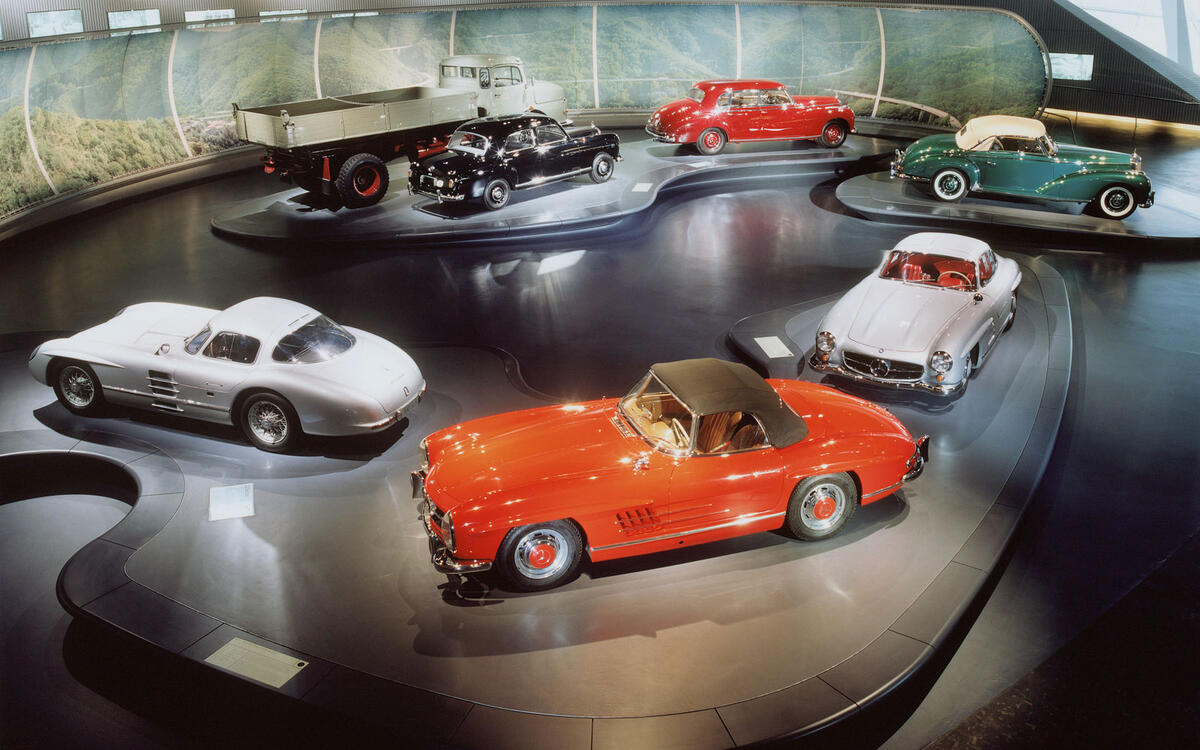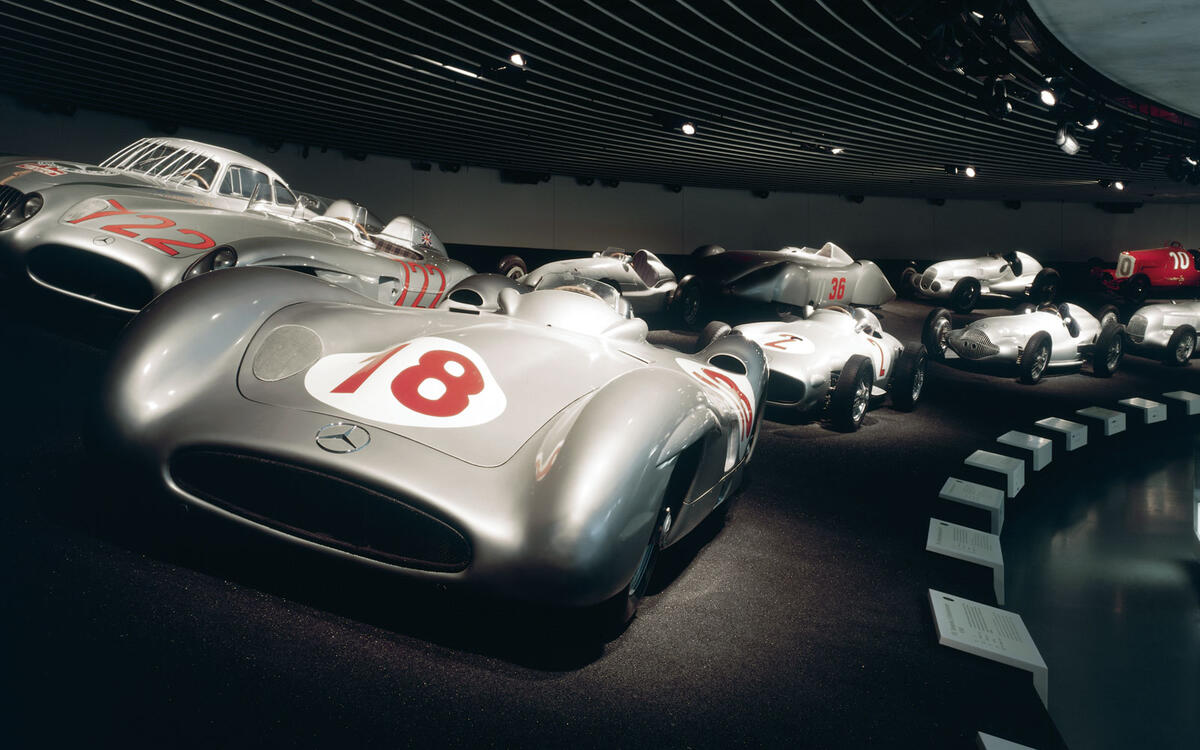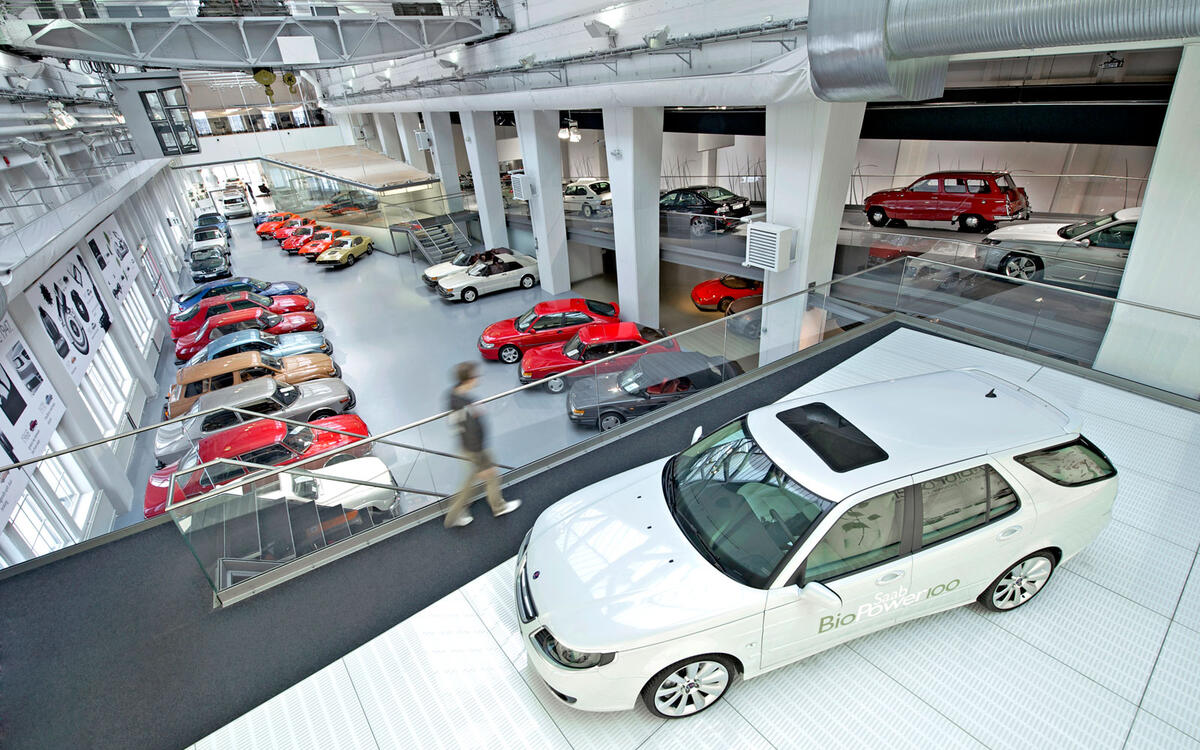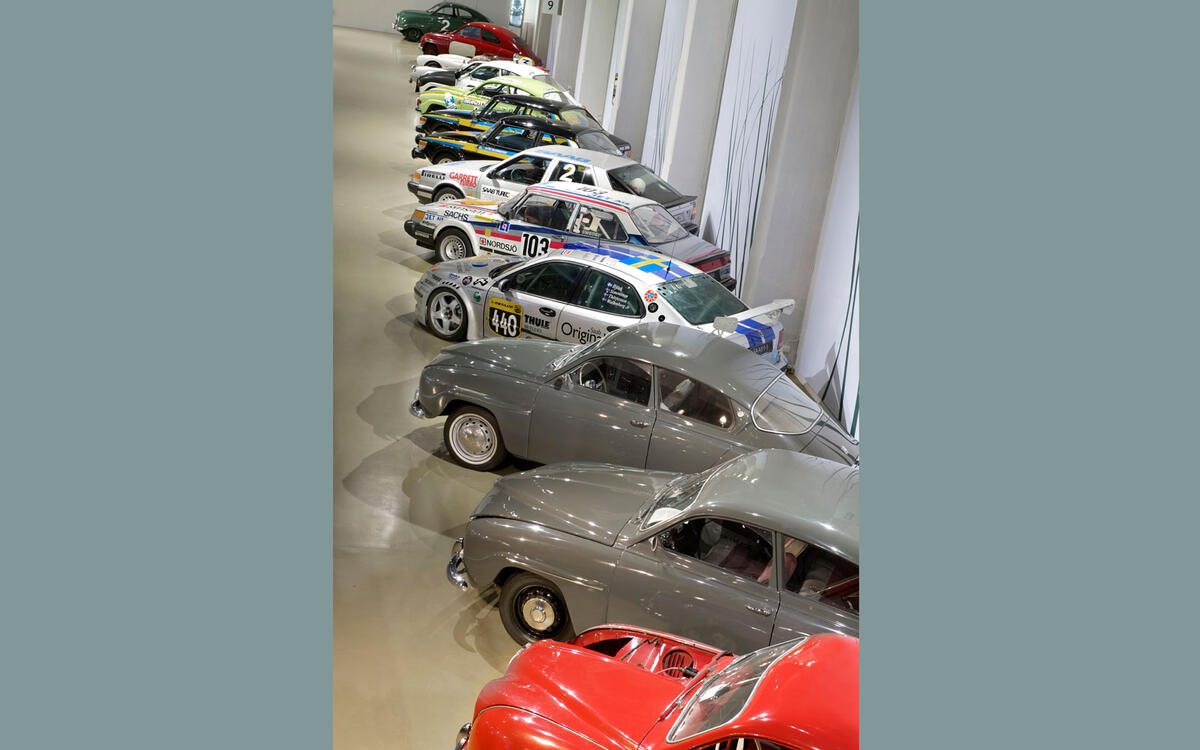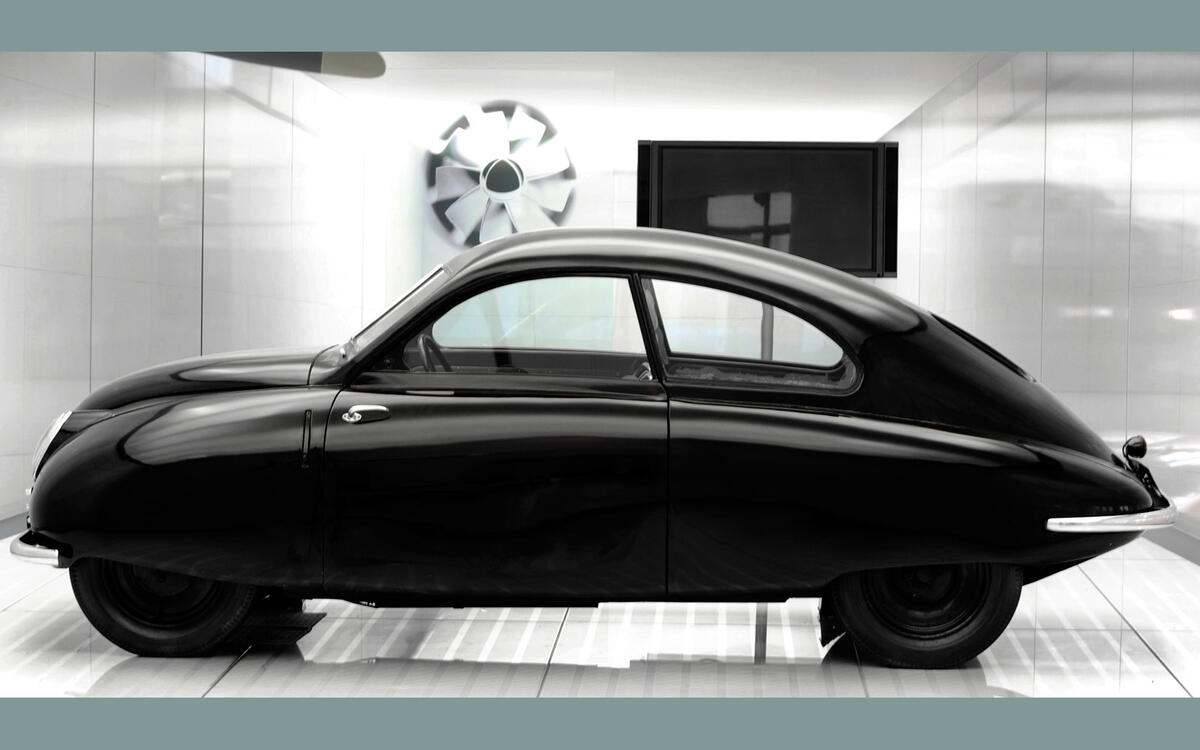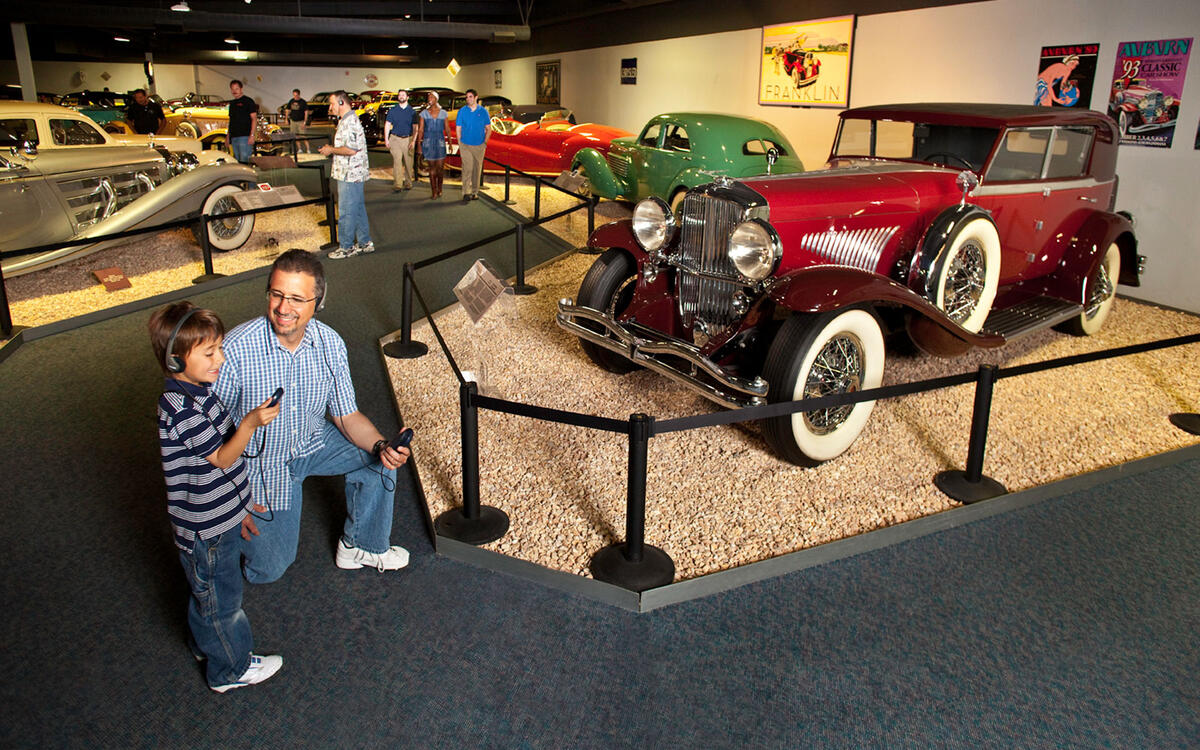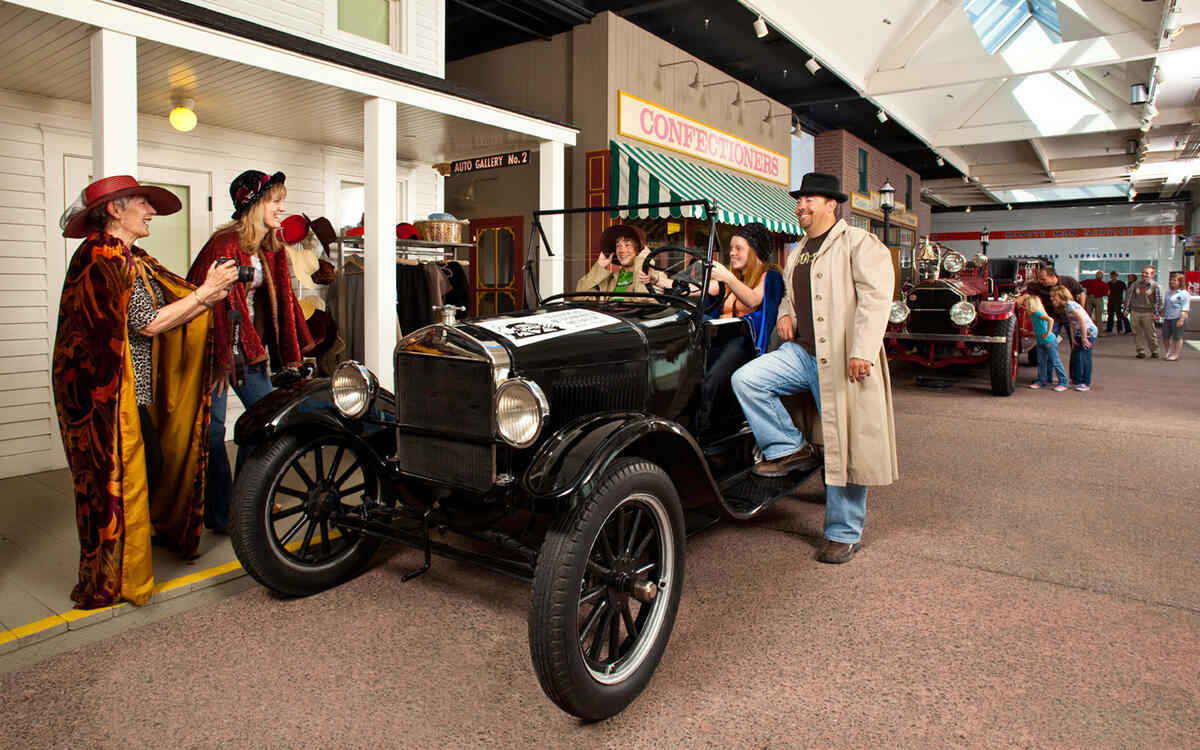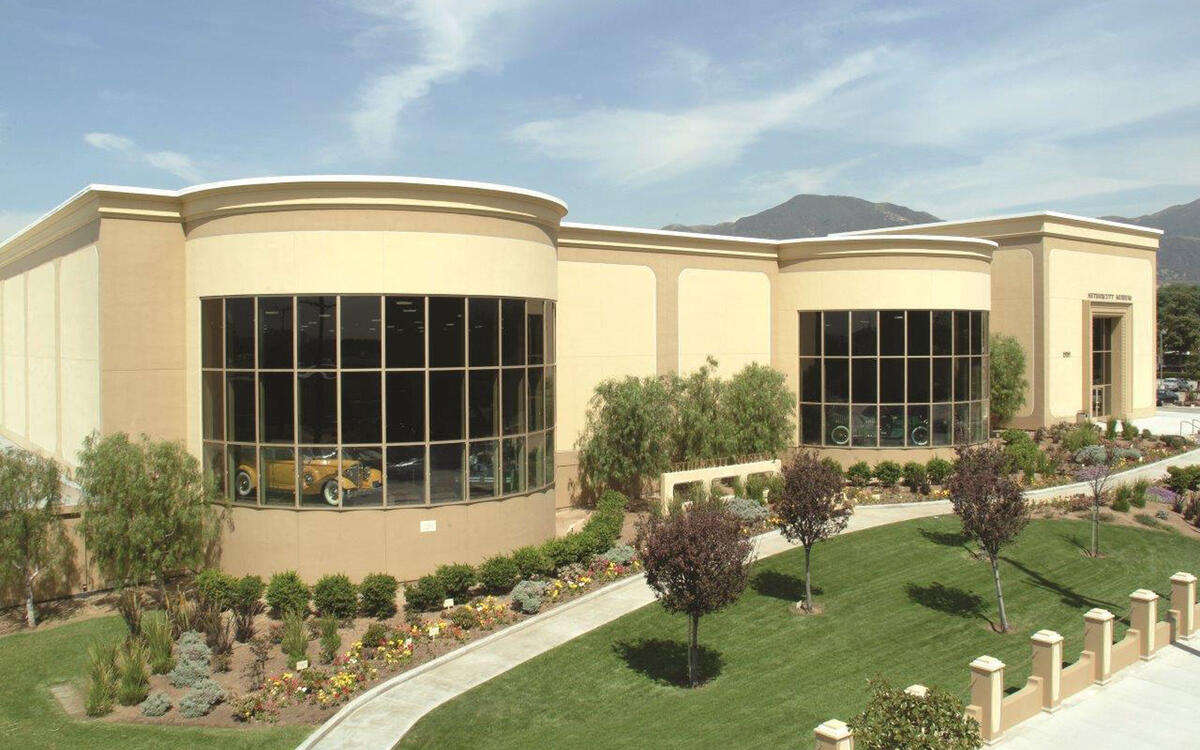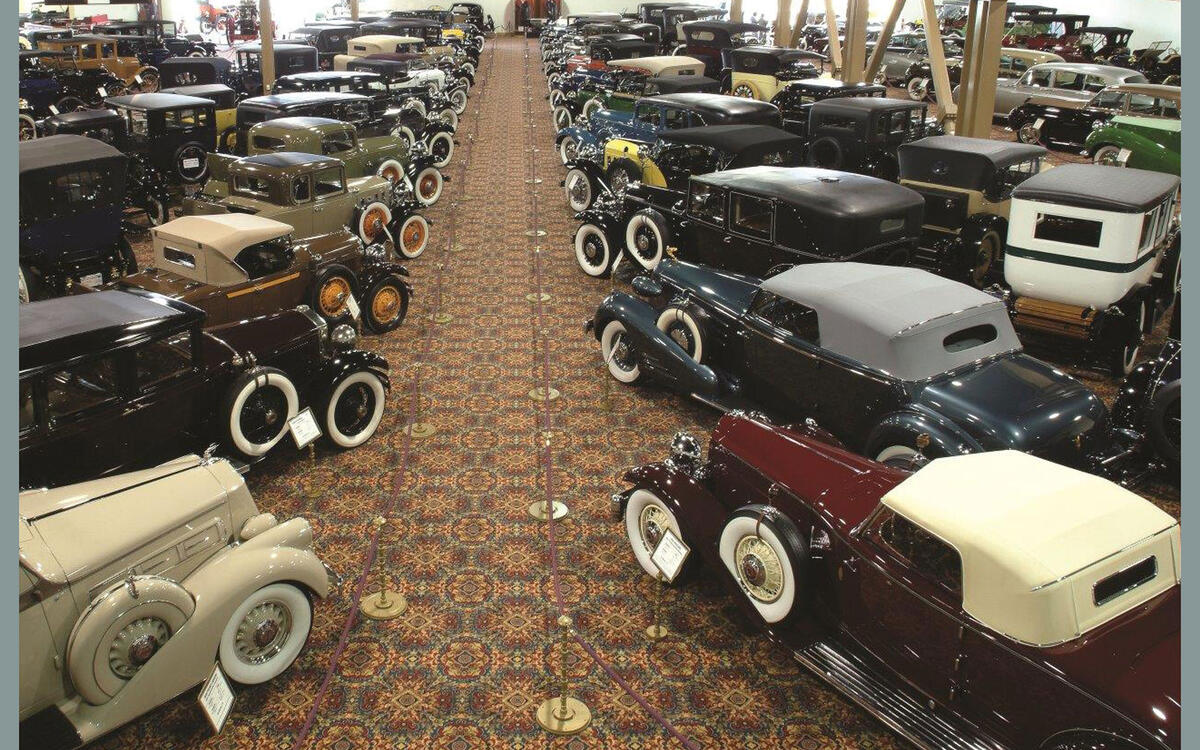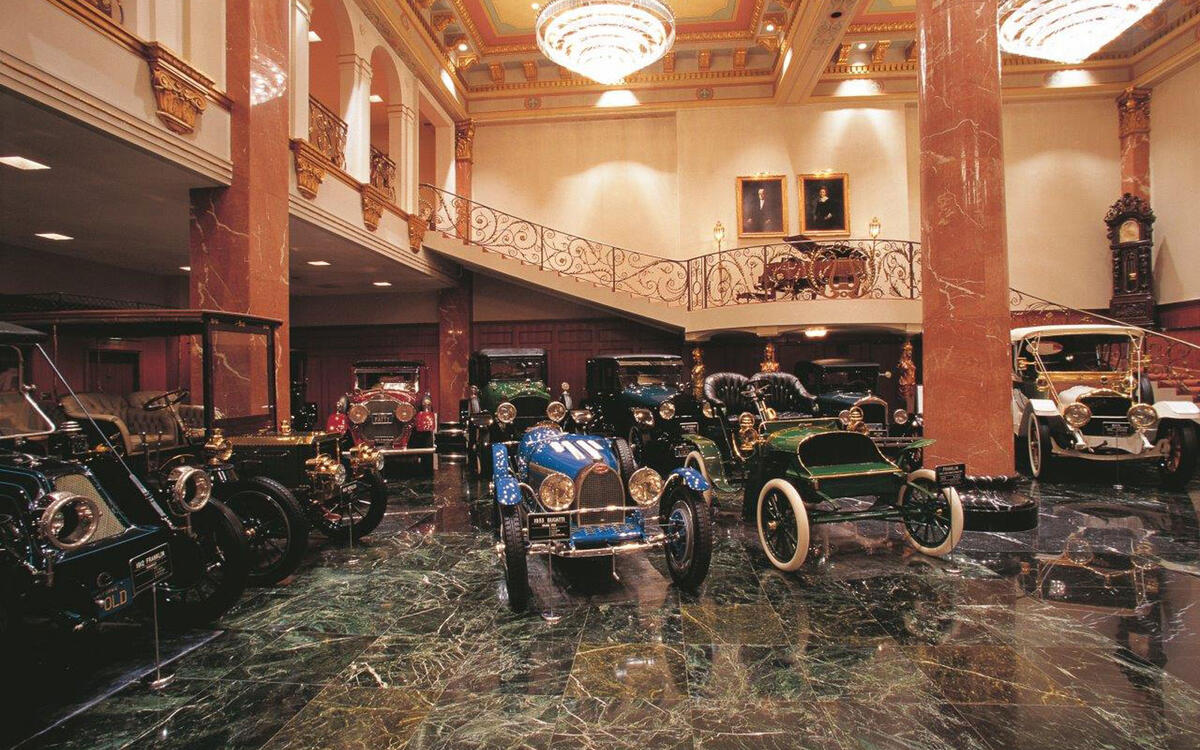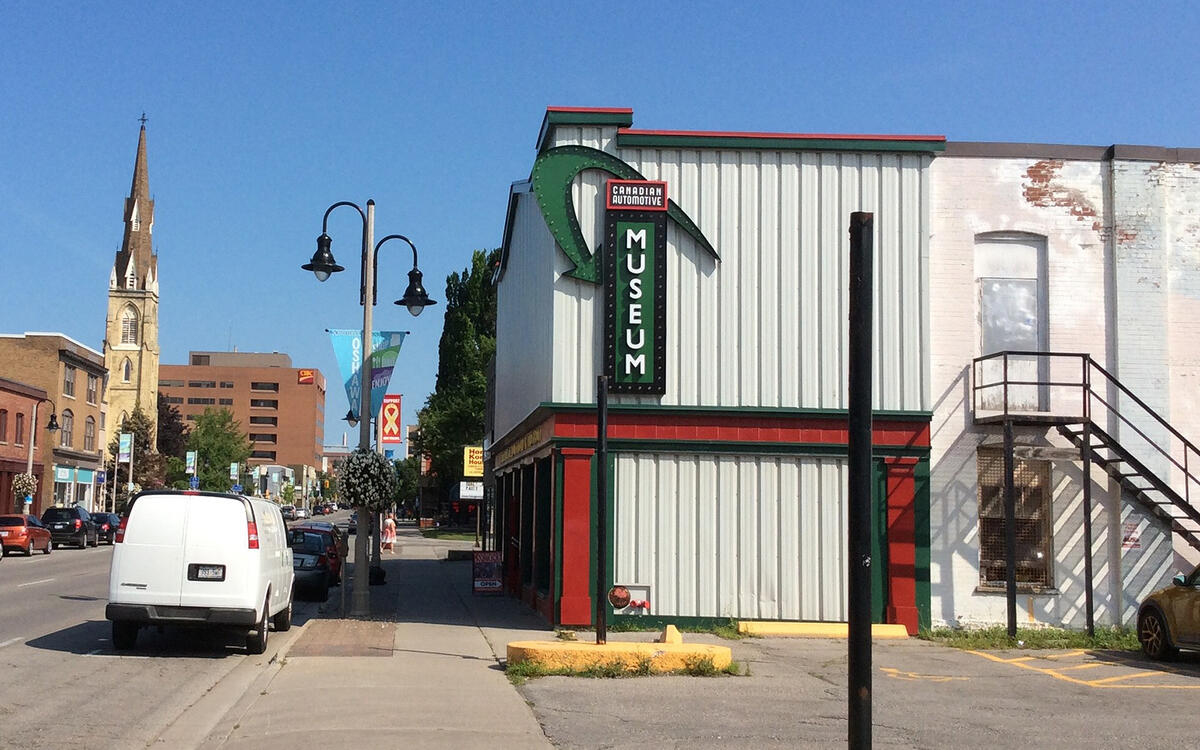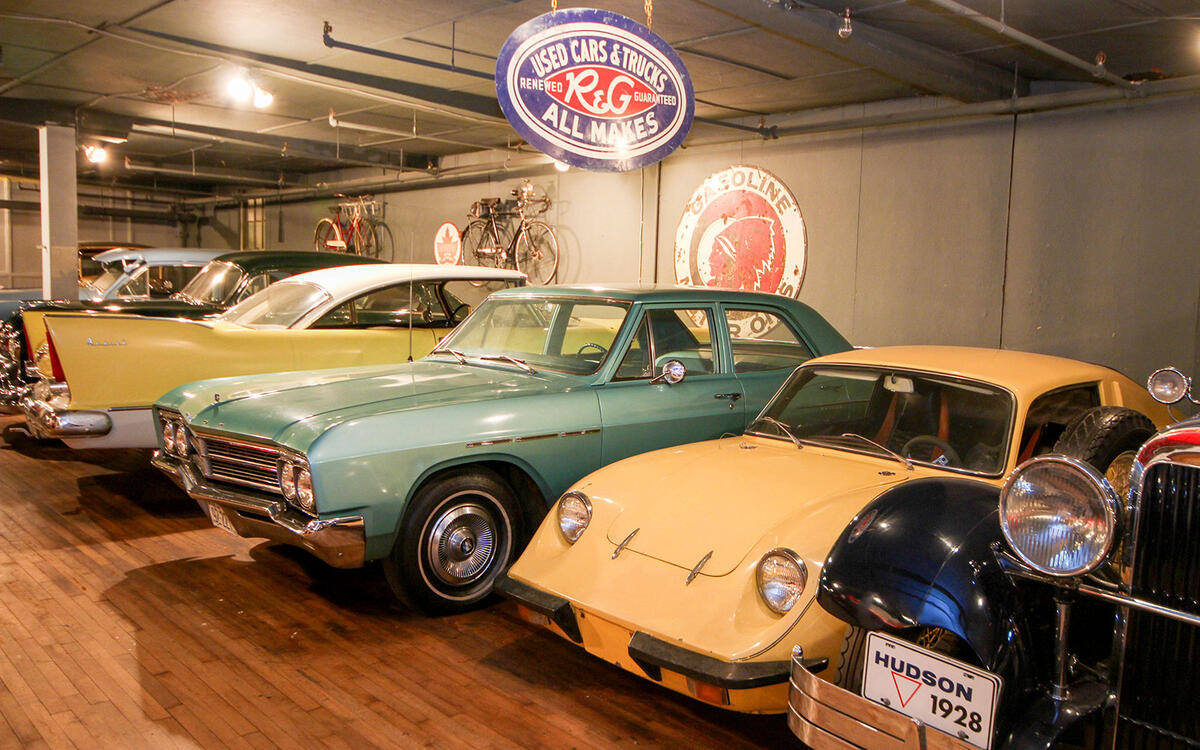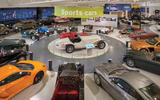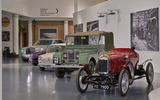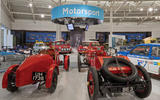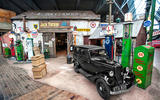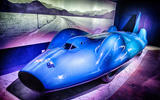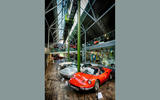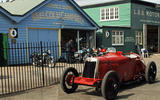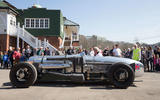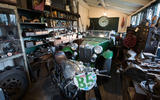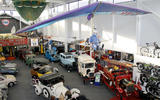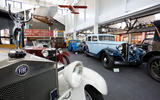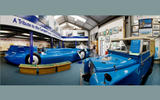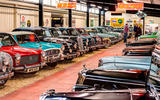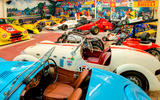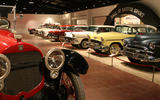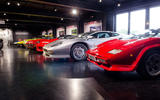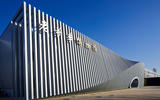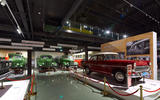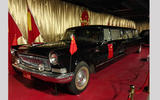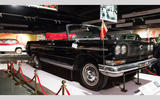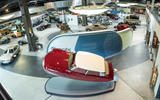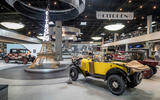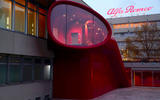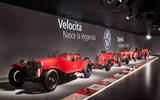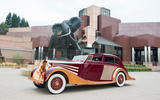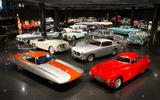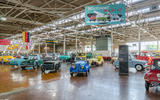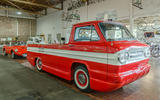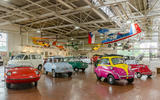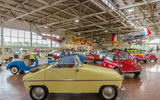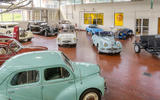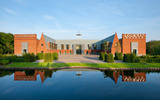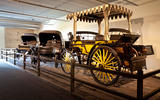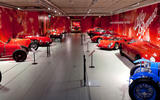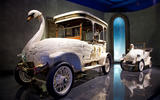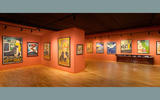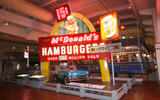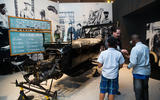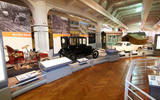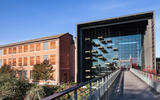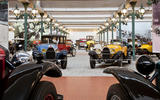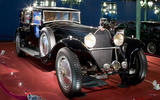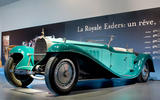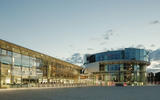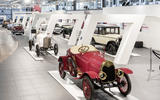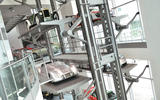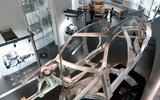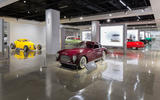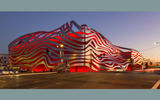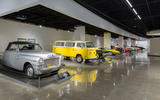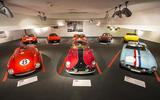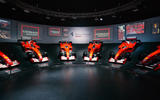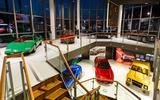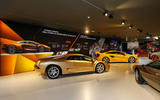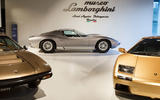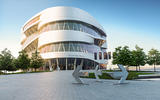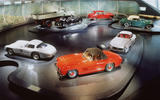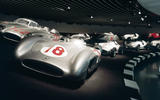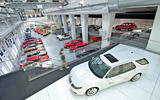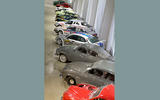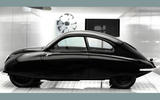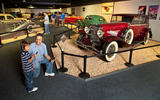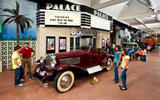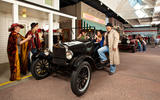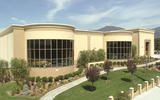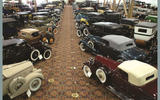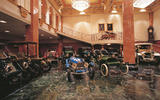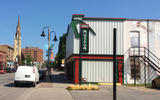 Slide of
Slide of
Here’s our guide to the greatest car collections in the world.
Consider this a collection of automotive bucket-list locations that you have to visit, one day. And who knows – we reckon it will be a great thing to to do as things get back to normal - touch wood - in 2022. Check museum websites for opening times, and any restrictions because of you-know-what. Let’s start off with all the ones in the UK, before we go further afield:
 Slide of
Slide of
British Motor Museum (UK)
Based in Gaydon in Warwickshire and rebranded as the British Motor Museum in 2016, this 300-strong collection of cars is run by the British Motor Industry Heritage Trust.
 Slide of
Slide of
British Motor Museum
The collection charts the history of Britain’s car industry and includes a vast array of unique vehicles including many firsts and lasts, prototypes and concepts. In this line for example are the world’s oldest surviving MG, Land Rover and Mini.
 Slide of
Slide of
British Motor Museum
Britain has produced some incredible sporting machines over the decades and the displays reflect this with single-seaters rubbing shoulders with rally cars, the latter including a pair of ex-Monte Carlo Minis along with a Metro 6R4.
 Slide of
Slide of
Beaulieu (UK)
Founded by Lord Montagu in 1952, The National Motor Museum in Hampshire started out with a five-strong collection of cars; in the intervening years it’s grown to over 250. It’s a family-friendly destination with loads going on to keep everyone amused all year round. More at www.beaulieu.co.uk
 Slide of
Slide of
Beaulieu
Among the exhibits are several land speed record holders including Donald Campbell’s Bluebird-Proteus CN7 (pictured). Designed to break the 500mph barrier, the 4,450bhp car managed just over 440mph in 1964.
 Slide of
Slide of
Beaulieu
Opened in 1972, the main museum building features a monorail, the inclusion of which was inspired by the light railway that ran through the US Pavilion during the Montreal World Fair in 1967.
 Slide of
Slide of
Brooklands (UK)
Too many car museums are located in anonymous-looking blocks, but not Brooklands, with its series of listed buildings that date back to the dawn of motorsport in the UK. Brooklands opened in 1907 and while much of the original track has now disappeared, sections of it remain.
 Slide of
Slide of
Brooklands
With its rich motorsport history, unsurprisingly, pretty much everything that’s on display at Brooklands is a racer of one sort or another. One of the most impressive machines is the 1933 24-litre Napier-Railton that averaged 150.6mph over 24 hours in 1936.
 Slide of
Slide of
Brooklands
You couldn’t really call Brooklands a sterile museum – it’s crammed with automobilia and collectibles too. As well as dozens of cars (many of them with incredible histories), there are also motorbikes and stored outside are loads of historic aircraft too, including a Concorde.
 Slide of
Slide of
Lakeland (UK)
Originally set up as a visitor attraction for nearby Holker Hall, the Lakeland Motor Museum is now located in Backbarrow, in Cumbria. With more than 30,000 exhibits on show including 140 classic cars and motorbikes there’s plenty to see; it’s detailed on its website.
 Slide of
Slide of
Lakeland
Among the cars are plenty of familiar classics such as a Capri 2.8i, Escort Mexico and Jaguar XK140. If you’re a TVR fan you’ll be able to see the oldest surviving example of the marque (the second car built, dating from 1952) and the only Cerbera Speed 12 ever made. Plus a stack of other British and European machinery.
 Slide of
Slide of
Lakeland
Donald Campbell died on nearby Lake Coniston in 1967, attempting the world water speed record. His Bentley 4 ¼-litre saloon is on show and there’s a complete building dedicated to him and his father, Malcolm. On show are full-sized replicas of the 1935 Blue Bird, 1939 Blue Bird Boat K4 and 1967 jet hydroplane Bluebird K7.
 Slide of
Slide of
Haynes (UK)
John Haynes - who died in February 2019 - made his fortune from publishing workshop manuals and as his car collection grew he decided it made sense to put everything into one building on public display. The result was the Haynes Motor Museum, opened in 1985. There are now over 400 cars on show.
 Slide of
Slide of
Haynes
Cars are grouped by theme. Those in the previous slide were the Memory Lane selection while this is American Dreams. Other collections include Mini & Micros, Great British Marques, the Red Room and the Morris Story.
 Slide of
Slide of
Haynes
Although road cars are the focus of the collection, there’s also a library, a display of classic motorcycles from around the world and one of the most popular halls is this one dedicated to motorsport.
 Slide of
Slide of
Haynes
If you make the pilgrimage to Somerset, where the Haynes Museum is based, don’t forget to have a good gawp at the Supercar Century display with its Porsche 911 2.7 Carrera RS, Jaguar XJ220 and Lamborghini Countach.
So that’s the UK – what about the international museums?
 Slide of
Slide of
Beijing (China)
China’s automotive industry isn’t very well documented and as a result it’s something of a mystery to most car fans. So if you’re in Beijing a visit to the city’s auto museum should fill in a few gaps in your knowledge.
 Slide of
Slide of
Beijing
It all started in 1979 when Luo Wenyou bought his first car – at a time when car ownership was extremely rare. He still owns that car, a Polish-built Warszawa, along with around 200 others. Some are commercial vehicles but most are cars built in either China or Russia.
 Slide of
Slide of
Beijing
The museum opened in 2009 and thanks to Luo’s connections he’s managed to source an array of fabulous (and fabulously rare) cars including some built exclusively for government officials in communist regimes. The museum specialises in Chinese classic cars and cars exported into China decades ago, so it charts the history of the development of the Chinese car industry and the evolution of the Chinese market.
 Slide of
Slide of
Beijing
The exhibits include cars used by Mao Zedong, Zhou Enlai and the rare earliest products of the chief Chinese car makers. This takes in a collection of Hongqi limousines, military parade cars, Dongfeng and Dongfanghong saloons, plus a ZIS used by President Liu Shaoqi (1959-1968) with its windows shattered during the Cultural Revolution.
 Slide of
Slide of
Mullin (USA)
Peter W Mullin has enjoyed a life-long fascination for French cars, and especially those from the Art Deco period. He has one of the finest collections of 1930s French cars including models by Delahaye, Delage, Bugatti, Voisin and Talbot-Lago.
 Slide of
Slide of
Mullin
The California-based museum opens for just a few hours each week (most Saturdays between 10am and 3pm), and at any one time there’s just one exhibition.
 Slide of
Slide of
Alfa (Italy)
Museo Storico Alfa Romeo in Arese was first opened in 1976, but 35 years later it closed down when the Arese factory was mothballed. As part of Alfa’s global relaunch plan the museum was restored and reopened in 2015, complete with library, a showroom for new cars and even a private test track.
 Slide of
Slide of
Alfa
Alfa’s glory days were in the pre-war years when Enzo Ferrari was the company’s motorsport manager. Among the 69 cars on show are the first A.L.F.A. car, the 24HP, legendary Mille Miglia winners such as the 6C 1750 Gran Sport driven by Tazio Nuvolari, the 8C coachbuilt by Touring and the Gran Premio 159 Formula 1 winner driven by Juan Manuel Fangio.
 Slide of
Slide of
Alfa
The first floor is taken up by a 19-strong line up of cars that represent the development of Alfa Romeo while on the ground floor is a display charting the evolution of the Giulia and Giulietta.
 Slide of
Slide of
Alfa
Not all of the exhibits are of cars that made production. Also on show is an array of fabulous concepts and design studies including the iconic Bertone Carabo from 1968, next to the Iguana that arrived a year later.
 Slide of
Slide of
Blackhawk (USA)
Based in Danville, California, the Blackhawk Museum (actually a collection of museums) opened in 1988 with a view to showcasing art, culture and history. More than merely a museum, it’s an educational centre that also puts on regular talks and film shows to inspire younger generations.
 Slide of
Slide of
Blackhawk
Within the 90-strong collection is a raft of unique vehicles including several concepts. These include the 1955 Dodge Firebomb which paved the way for the Dual-Ghia that went into production in 1956.
 Slide of
Slide of
Lane (USA)
Jeff and Susan Lane love the unusual and by 2002 they had amassed a collection of 70 weird and (sometimes not so) wonderful cars. So they opened their own museum in Nashville to display them all. Since then the collection has mushroomed to over 500 vehicles, around 150 of which are on show at any given time. More at https://www.lanemotormuseum.org/
 Slide of
Slide of
Lane
Everywhere you look there are cars that you’ve probably never seen before. Even in Europe the European models are ultra-rare; if you hail from the US, any walk around the museum is guaranteed to be a voyage of discovery. This pic shows a Corvair pick-up in front of a Reliant Sabra.
 Slide of
Slide of
Lane
The museum regularly rotates its exhibits, with the cars grouped by theme. This is a previous microcar exbihibiton.
 Slide of
Slide of
Lane
A big proportion of the cars on show don’t hail from the US. Believe it or not, there are no fewer than 23 Czech-built Tatras in the collection, with pretty much the company’s entire history represented.
 Slide of
Slide of
Lane
This is the French car display. The silver saloon at the back that looks like an Austin, is actually a super-rare Hotchkiss-Gregoire while the blue sports car is a Matra Djet – the world’s first mid-engined production car. The two cars in the middle are Panhard Dynas: a Junior and an X85.
 Slide of
Slide of
Louwman (Netherlands)
With over 250 cars in its collection the Louwman Museum has plenty to amuse, especially if you’re into the really old stuff; there are dozen of cars on display from the first 25 years of motoring. The museum is based in The Hague.
 Slide of
Slide of
Louwman
When you look at how primitive the earliest cars were, it’s easy to think they should have been given up as a bad job. But even these 19th century models offered far better efficiency than any horse and carriage combo. In the foreground is a Benz Phaeton from 1895, looking like a wheeled gazebo.
 Slide of
Slide of
Louwman
There’s a particularly fine selection of historic Alfa racers in the collection which is why they get a hall all to themselves. As well as a pair of 6Cs and 8Cs there are also no fewer than three Tipo 33s.
 Slide of
Slide of
Louwman
The unique Brooke Swan Car was commissioned in 1910 by wealthy Scotsman Robert Matthewson, who lived in Calcutta. The swan’s eyes glow, its beak emits steam and there’s an exhaust-driven eight-tone horn. Fully restored in 1991, it’s an amazing creation.
 Slide of
Slide of
Louwman
As well as all of the cars there’s plenty of automobilia to ogle. From petrol pumps and paintings to model cars and sculptures there are halls of fabulous collectibles on show.
 Slide of
Slide of
Henry Ford (USA)
It would be easy to assume that the Henry Ford Museum would be chock full of vehicles wearing the Blue Oval, but not at all; the variety is much greater than that. The largest museum complex in North America, more than 1.6 million people visit the Dearborn-based venue.
 Slide of
Slide of
Henry Ford
Covering 300 acres and with 26 million artefacts, the Henry Ford Museum has exhibits showcasing the history of popular culture, aviation, textiles, motoring and engineering – among all sorts of other topics.
 Slide of
Slide of
Henry Ford
Unsurprisingly, a chunk of the museum is given over to delving into the history of the Ford brand, including its products and how the cars were built. After all, if there’s one thing that’s Ford is very good at, it’s refining the manufacturing process...
 Slide of
Slide of
Henry Ford
Among the cars on display are the first Mustang built, the Lincoln Continental in which JFK was assassinated and the 999 race car with which Ford won the Manufacturers’ Cup Challenge in 1902 – plus a mass of the company’s biggest-selling models from more than a century of car production.
 Slide of
Slide of
Schlumpf (France)
The story behind the Schlumpf Collection is worthy of a film. In short, two brothers (Hans and Fritz) owned several textile factories and Fritz started to secretly hoard Bugattis and other collectible cars in the 1960s. When their business went down the tubes in the 1970s their employees discovered the hoard, drove the brothers into exile and took over the building with the cars in it.
 Slide of
Slide of
Schlumpf
Fritz acquired Bugattis at a ferocious rate. In 1962 he bought nearly 50 of them and by 1967 he had 105 in his collection. By the time the company went bust there were over 500 cars in storage.
 Slide of
Slide of
Schlumpf
The Bugatti Royale is among the most valuable and collectible cars in the world. There are just six of them and two of them are on display in Mulhouse – along with a replica of the incredible Esder cabriolet (next slide).
 Slide of
Slide of
Schlumpf
Billed as the world’s biggest car museum, the Schlumpf collection became France’s National Motor Museum in 1982. It was relaunched in 2000. It’s not all about Bugattis though – there are plenty of other eye-popping motors on show with marques from all around the globe represented.
 Slide of
Slide of
Audi (Germany)
With more than 400,000 visitors every year, the Audi Forum in Ingolstadt is a major tourist destination. The museum contains over 100 cars and motorbikes with multi-media presentations and its own cinema that shows a series of films charting the history of one of Germany’s most successful brands.
 Slide of
Slide of
Audi
As if one museum isn’t enough there’s another Audi Forum at Neckarsulm, charting the very complex evolution of the company. So complex that it takes in Horch, Auto Union, DKW, Wanderer and NSU.
 Slide of
Slide of
Audi
The Forum in Ingolstadt charts the evolution of Audi’s motorsport history, from the streamlined Auto Union racers of the 1930s to the latest endurance racers and GT3 cars.
 Slide of
Slide of
Audi
Because Audis are built in Ingolstadt, a lot of owners visit to collect their new car; more than 125,000 make the pilgrimage every year. Many combine this with a visit to the Forum to check out their new car’s heritage.
 Slide of
Slide of
Petersen (USA)
Located on Wilshire Boulevard in Los Angeles, the Petersen Automotive Museum is a petrolhead’s paradise as it covers the entire automotive spectrum. From 19th century horseless carriages to hot rods and customs with iconic models along the way, the Petersen is the perfect embodiment of car culture.
 Slide of
Slide of
Petersen
The museum was founded in 1994 by car magazine publisher Robert E Petersen and his wife Margie. Based in an old department store built in 1962, a $90m makeover in 2015 gave the museum a rather more impressive look. At any one time there are around 25 separate exhibitions; the museum’s website details what’s currently on show.
 Slide of
Slide of
Petersen
The museum isn’t afraid to show custom cars, but there are also halls of superb original classics that take in US and European cars, not all of them predictable.
 Slide of
Slide of
Ferrari (Italy)
Not content with just the one museum, Ferrari has two of them: Museo Ferrari in Maranello and Museo Enzo Ferrari in Modena. While the latter focuses more on the man and the engineering behind the cars, the former is more about the racing exploits of the brand and the amazing road cars built over the past seven decades.
 Slide of
Slide of
Ferrari
All of these pictures are of the Museo Ferrari in Maranello, which is right next to the factory. With so many brilliant cars built over the past 70 years, working out what to omit must have been tough; just this one corner of the museum has luminaries such as the Boxer, Daytona, 250 GT SWB and 250 GT TdF.
 Slide of
Slide of
Ferrari
To keep things fresh the exhibitions change from time to time. At present, there’s an exhibition of race cars to celebrate the 90th birthday of Scuderia Ferrari, the company’s successful Formula One team.
 Slide of
Slide of
Lamborghini (Italy)
One of the most enigmatic and exciting brands in the world, Lamborghini has created more models than you might think, since it opened for business back in 1963. Opened in 2001 and revamped in 2016, the museum is a shrine to the bulls from Sant’Agata.
 Slide of
Slide of
Lamborghini
All of the company’s key models are on display, along with a few one-off and prototypes. In the background here is the still-born Cala while on the previous slide were the Asterion and Urus concepts.
 Slide of
Slide of
Lamborghini
For most fans this is where it all started – the world’s first mid-engined production supercar (although the Ford GT40 is also in the frame for the same honour). However, before the Miura there was the one-off 350 GTV as well as the 350 GT.
 Slide of
Slide of
Mercedes-Benz (Germany)
You would expect the company that invented the car to have a pretty impressive museum and it doesn’t disappoint. Opened in May 2006, more than eight million people have visited so far, to pore over the 160 vehicles and 1,500 exhibits displayed across 178,000 square feet of exhibition space.
 Slide of
Slide of
Mercedes-Benz
Spread over nine levels, visitors can take one of two guided tours that transport them through more than 130 years of automotive history. The first tour consists of seven Legend rooms which narrate the chronological history of the brand; the second tour groups the vehicles into five separate Collection rooms, which document the breadth and diversity of the brand. Visitors can switch from one tour to the other at any time.
 Slide of
Slide of
Mercedes-Benz
Both tours finish at the banked curve entitled Silver Arrows – Races & Records. The exhibition is rounded off by the Fascination of Technology display, which offers a glimpse into day-to-day work at Mercedes-Benz and also presents topics concerning the future of the car.
 Slide of
Slide of
Saab (Sweden)
The company may be only a footnote in the annals of motoring history but the Saab Museum is still very much alive and well. In 2012 the museum was threatened by Saab’s bankruptcy and there were fears that it would be sold off and scattered far and wide, but it was saved and remains intact.
 Slide of
Slide of
Saab
You probably hadn’t realised that Saab had built so many different models over the years. The museum’s website details everything that’s on show, including the prototype and a production example of Saab’s first car, the 92, along with a six-cylinder 93, two generations of Sonett and the Catherina sports car prototype that never made it to production.
 Slide of
Slide of
Saab
This is where it all started; the UrSaab, or original Saab prototype from the late 1940s. One of four prototypes built, this one clocked up over 300,000 miles and led directly to Saab’s first production car, the 92 which arrived in 1949.
 Slide of
Slide of
National Automobile Museum (USA)
Previously known as the Harrah Collection, after the late casino mogul William F Harrah who accumulated the various cars, the National Automobile Collection is based in Reno, Nevada. Harrah assembled 1,450 cars but after he died in 1978 most were sold off. The current museum opened in 1989.
 Slide of
Slide of
National Automobile Museum
The museum has 250 cars of its own and there are typically another 100 on loan from private collections. As with many museums, not everything is on display at any givem time, but unusually, visitors are allowed into the hangars where the extra cars are stored so they can see everything.
 Slide of
Slide of
National Automobile Museum
As you might expect, most of the cars on show are American, but there are some imports displayed too. So alongside Fords, Chevrolets, Lincolns and Cadillacs from every era you’ll find post-war British sports cars, an early Daimler and even a 1953 Citroën 2CV that took part in the Peking to Paris rally.
 Slide of
Slide of
Nethercutt (USA)
Founded in 1971 by JB Nethercutt and his wife Dorothy, the Los Angeles-based Nethercutt Collection consists of 250 cars along with some of the most incredible mechanical musical instruments ever created. The museum is free to enter.
 Slide of
Slide of
Nethercutt
There are plenty of post-war cars on display, including a Mercedes 300SL gullwing, Austin Healey 100M, Ferrari 365 California Spyder and Bentley MkVI. But the bulk of the collection covers pre-war models from the likes of Bugatti, Duesenberg, Maybach and Cord.
 Slide of
Slide of
Nethercutt
The museum’s architecture is almost as much of a draw as the exhibits themselves. As this picture shows, the cars on display go back to the dawn of motoring with the earliest models dating from the 1890s.
 Slide of
Slide of
Canadian Motor Museum (Canada)
First opened in 1963, the Ontario-based Canadian Motor Museum is in Oshawa, where the General Motors Canada factory used to be based. The museum has lots of Canada-specific GM models on show from as early as 1900.
 Slide of
Slide of
Canadian Motor Museum
Based in an old car dealership, the museum has a selection of American and Canadian cars on display as well as plenty from Europe, the latter including several pre-war Rolls-Royces. Our favourite is the fabulously named Manic GT, the beige car here, which was built in Quebec in small numbers, using Renault running gear.
If you enjoyed this story, sign up to Autocar’s newsletter for all the best car news, reviews and opinion direct to your inbox. Click here to subscribe.
What better way to celebrate a return to near-normal in 2022 than to visit a great car museum? Here’s our pick of the best
Advertisement


